Tūhono ki hauora
Connecting our communities to health and wellbeing education
Mana model underpins mental health education approach
Self-expression and intergenerational connections in the arts
Creating a school with a heart for trauma
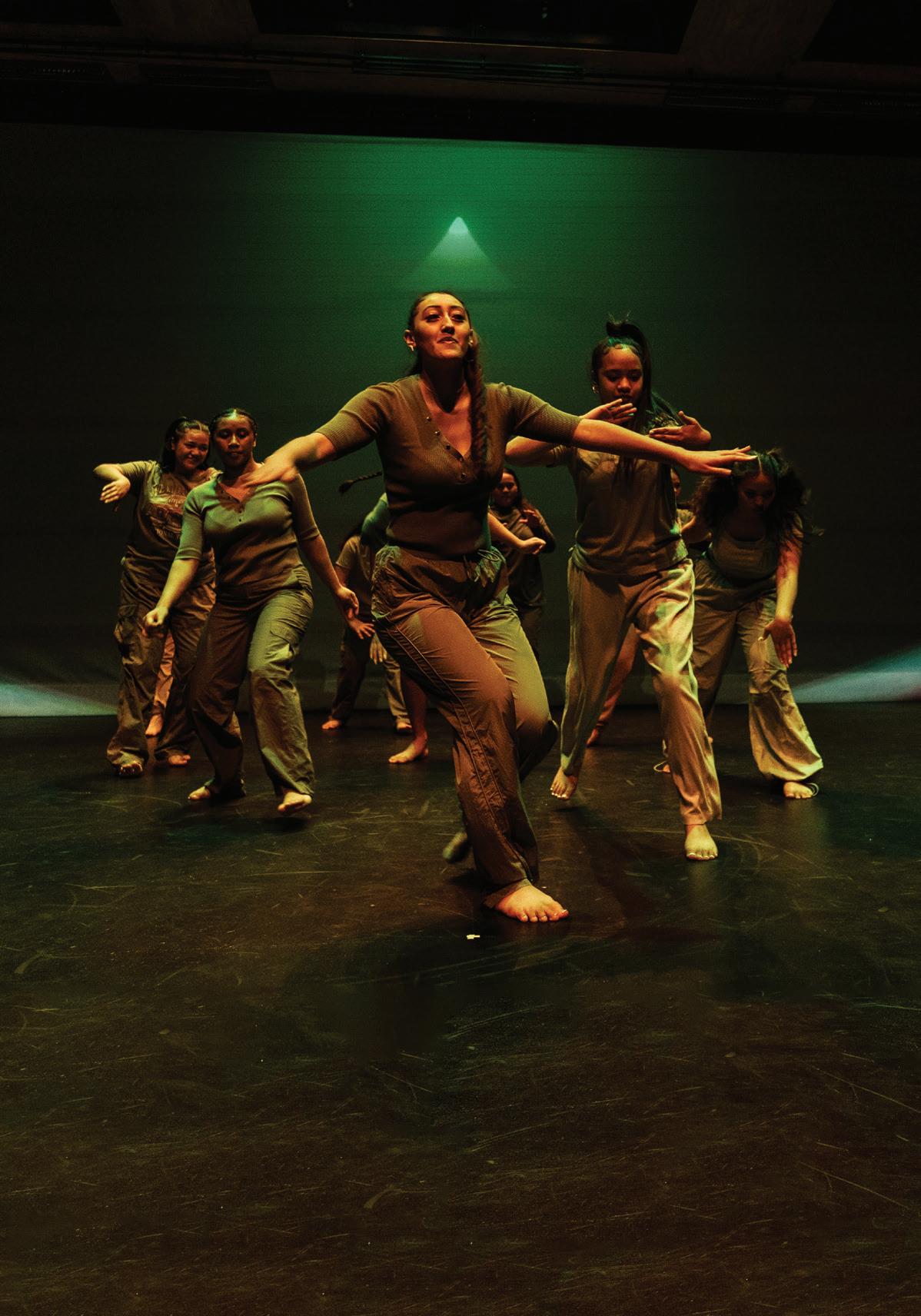
18 SEPTEMBER 2023 | VOL. 102 | NO. 12
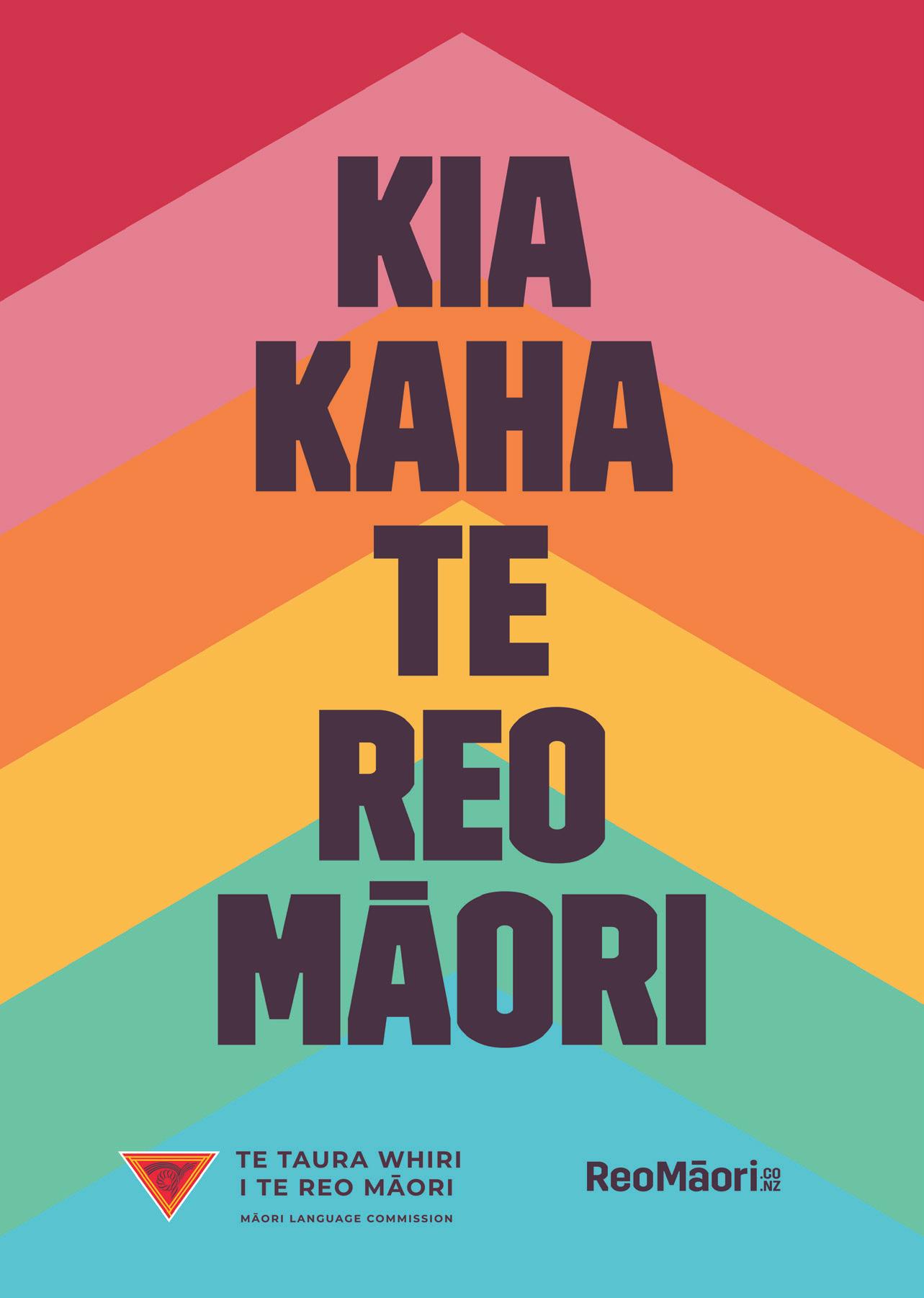
4 Mana model underpins mental health education approach
8 Creating a school with a heart for trauma
12 Five Ways for Five Days
14 Whakarongo ki tōku reo: Engaging the voices of ākonga in hauora education


18 Self-expression and intergenerational connections in the arts
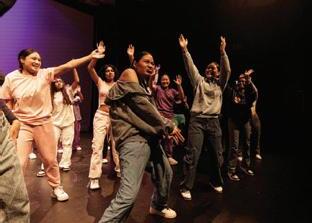
24 Students put social and emotional change on the cards
Strengthening community connections at Papakura Marae
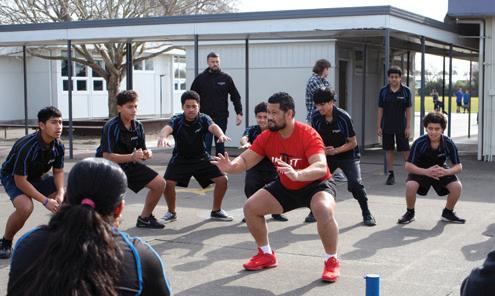
Storybooks support mental health
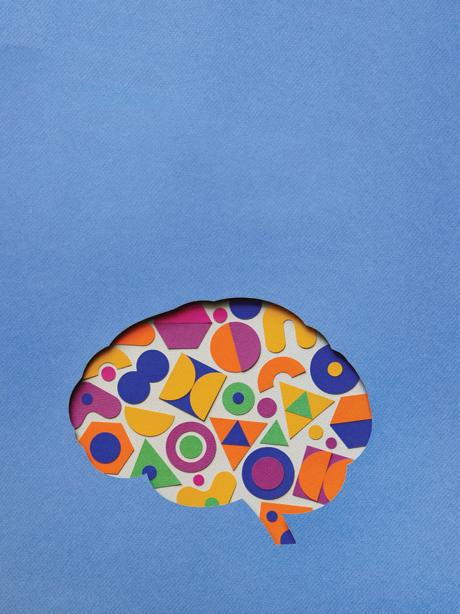
Getting ‘In2’ wellbeing with holistic fitness programme
40 Culturally sustaining hauora programmes
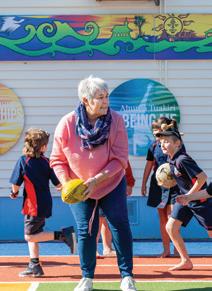
42 Supporting ākonga with high health needs
48 Gamifying nutrition helps ākonga make healthier choices
50 Channelling youth wellbeing on SchoolTV
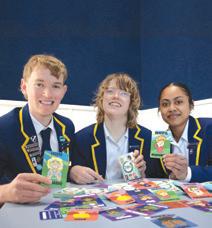
On the cover
students
1 Tukutuku Kōrero 18 September 2023
of
supported
in
ISSUE 102.12 Contents 4 14 8 18 24 36
Page 18. Senior
from Aorere College in Tāmaki Makaurau leave all their emotions on the stage in a performance as part
their Power Project,
by Creatives
Schools.
Where to get help
The Mental Health Foundation has practical tips, stories, and resources focused on things we can all do to maintain our mental wellbeing and look after our students, whānau and communities. The site also includes additional helplines, tools and resources. See page 12 for more information, including about Mental Health Awareness Week.
Manatū Hauora Ministry of Health also has a list of digital resources and tools such as: Groov, an app that you can use to monitor, manage and improve your mental wellbeing; Small Steps, digital tools to help you maintain wellness, find relief, or get help; Headstrong (including Aroha Chatbot), a uniquely New Zealand chatbot app designed for young people; Triple P Online, online parenting designed to help parents support their children, promote wellbeing and make family life more enjoyable; Wellbeing Support, an online directory to find free mental health and addiction support near you through the Access and Choice programme. Visit health.govt.nz or scan the QR Code to access these and more.
Need to talk?
• Free call or text 1737 any time for support from a trained counsellor.
• The Depression Helpline – 0800 111 757 or free text 4202 (to talk to a trained counsellor about how you are feeling or to ask any questions).
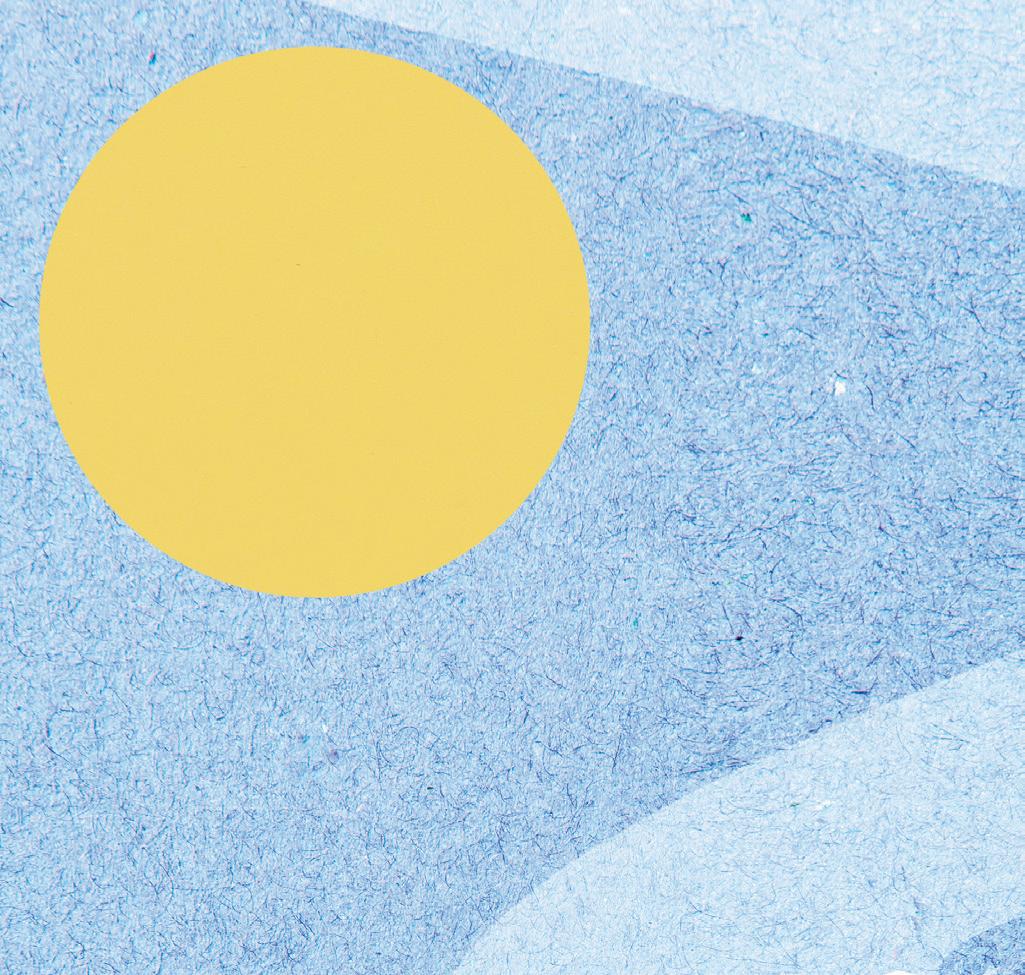
• Youthline – 0800 376 633, free text 234 or email talk@youthline.co.nz or online chat.
• The Lowdown – text 5626 for support to help young people recognise and understand depression or anxiety. · Alcohol Drug Helpline –0800 787 797
Note on health and safety
In Issue 102.10, Education Gazette published a cover photo that did not properly display appropriate health and safety in a science classroom, and with the use of a Bunsen burner. We pride ourselves on showcasing best practice in education, including health and safety. If you ever feel we are missing the mark, please do get in touch at gazette@education.govt.nz.
PUBLISHED BY
Education Gazette is published for the Ministry of Education by NZME. Educational Media Ltd. PO Box 200, Wellington.
ISSN 2815-8415 (Print)
ISSN 2815-8423 (Online)
All advertising is subject to advertisers agreeing to NZME. Advertising terms and conditions www.nzme.co.nz/ media/1522/nzme-advertisingterms-sept-2020.pdf
STORY IDEAS
We welcome your story ideas. Please email a brief (50-100 words) outline to: gazette@education.govt.nz
SUBSCRIPTIONS
eleni.hilder@nzme.co.nz
VIEW US ONLINE Web: gazette.education.govt.nz
Instagram: @edgazettenz Youtube: youtube.com/ edgazettenewzealand
KEY CONTACTS
Reporter gazette@education.govt.nz
Display & paid advertising
Jill Parker 027 212 9277 jill.parker@nzme.co.nz
Vacancies & notices listings
Eleni Hilder 04 915 9796 vacancies@edgazette.govt.nz notices@edgazette.govt.nz
DEADLINES
The deadline for display advertising to be printed in the 9 October 2023 edition of Education Gazette is 4pm on Friday 22 September 2023.
view the PLD, general notice listings and vacancies at gazette.education.govt.nz
the QR codes with the camera on your device. 2 Education Gazette gazette.education.govt.nz
publication is produced using FSC®
paper from Responsible Sources.
VACANCIES NOTICES PLD To
Scan
This
Certified
Prioritising hauora
This edition is published just as we begin Mental Health Awareness Week, and so it made sense to bring you a hub of information, stories, and resources all about hauora and wellbeing.

It’s important for schools and kura to deliver effective, high-quality wellbeing and hauora programmes and promote empowering approaches to mental health education for all ākonga, including ākonga Māori, ākonga from Pacific backgrounds, ākonga of all sexualities and gender identities, ākonga from migrant and refugee backgrounds and disabled ākonga.
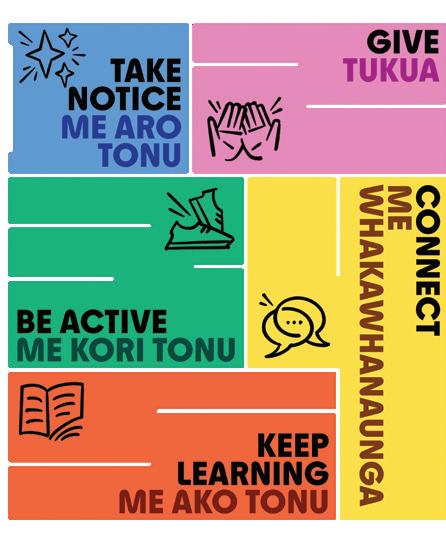
Read about the mana model underpinning mental health education, a Waikato school finding connections with a traumainformed approach, engaging the voices of ākonga in Waitaha Canterbury, how self-expression and creative projects can channel and uplift wellbeing, a Young Enterprise Scheme project putting social and emotional change on the cards, a marae in Tāmaki Makaurau using physical activity to connect with schools and kura in new ways, new multilingual storybooks supporting mental health, a holistic fitness programme in Te Matau a Māui Hawke’s Bay, culturally sustaining hauora programmes in Te Waipounamu, how Health Schools are supporting ākonga with high health needs, and two types of digital technology bringing mental health and wellbeing to life.
We would love to know how your early learning service, school or kura is supporting Mental Health Awareness Week. Please get in touch with us and share your stories!
Sarah Wilson Ētita | Editor
EDITOR’S NOTE 3 Tukutuku Kōrero 18 September 2023
Noho ora mai rā, nā
Read more about Mental Health Awareness Weeks’ Five Ways for Five Days on page 12.
Mana model underpins mental health education approach
Mental health education guidelines and resources in Aotearoa have attracted international interest, with two University of Auckland academics presenting their work in Scotland and Spain in August. Education Gazette spoke to Dr Melinda Webber (Ngāti Whakaue, Ngāpuhi, Ngāti Kahu) just as she and Dr Katie Fitzpatrick travelled to present their mahi on mental health education.
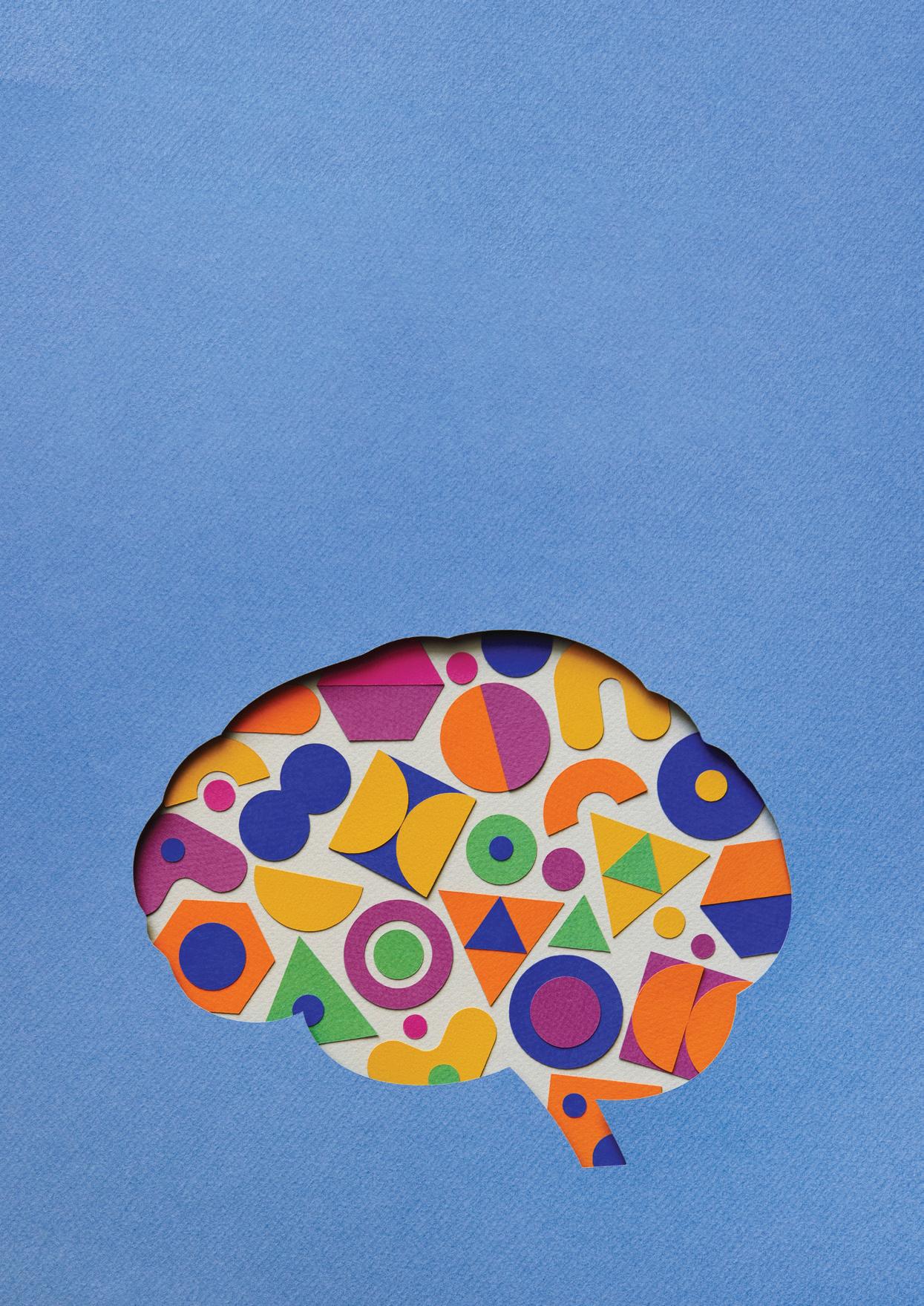
4 Education Gazette gazette.education.govt.nz
MENTAL HEALTH EDUCATION
Dr Katie Fitzpatrick is a professor of health and physical education and head of school at Te Kura o te Marautanga me te Ako, the School of Curriculum and Pedagogy. At the European Educational Research Conference in Glasgow, she gave a presentation about Mental health education: A guide for teachers, leaders and school boards. Dr Melinda Webber, ahorangi/professor at Te Puna Wānanga School of Māori and Indigenous Education, gave a presentation about the importance of strong positive cultural identities for all learners. They then also presented their work at a critical health symposium at the University of Valencia in Spain.
Diverse approaches
The first resource developed by Katie, Melinda and their team at the University of Auckland in 2019 was the Mental Health and Hauora Education resource, developed for secondary schools and now freely available and widely used in kura and schools.
While Sir Mason Durie’s Te Whare Tapa Wha model of a holistic approach to hauora and health is still an important part of the mental health policy and resources, Melinda says other theories of mental health have also been included to ensure the material reflects diverse perspectives of mental health education and worldviews.
“There are cultural differences in the ways different groups think about mental health. Many indigenous worldviews are holistic, so when we’re talking about health, we might use the word hauora in te reo Māori which includes spiritual, mental, physical, social health and assumes that all those components are included in any conception of health. Pacific models of health are very grounded in the wellbeing of the community.
Whole-school approach
Mental health education: A guide for teachers, leaders and school boards took the University of Auckland team around two years to research and write. The policy and guidelines were published in 2022 with a rationale emphasising the worsening mental health statistics and what’s happening
right now with young people’s mental health.
“We talked to people from the Mental Health Foundation, school counsellors, a whole range of people and some already delivering PLD in mental health to get to the heart of ‘what can’t be left to chance?’
“There’s been a tendency to focus on young people as all having the same needs and thinking about the world the same, but there are different identities and mental health needs within each group.
“We are saying: ‘Know your students, know how they identify themselves and be respectful of their choices.’ Young people know who they are and who they want to be. If they want a different pronoun or name, how does it hurt us to honour that? A mana-full response is to say, ‘I respect your choices as a young person’,” says Melinda.
Teachers are not forgotten, and the guidelines and resources take a whole school approach where schools and communities are encouraged to pay attention to the wellbeing of everyone in their community.
“In the guidelines, we’re saying it’s difficult to teach mental health education consistently in the classroom if you don’t have robust mental education policies and practices in the school. School leaders and boards must also pay attention to whether their staff are feeling respected and well,” says Melinda.
Maintaining mana
The guidelines and resources speak to the concept of mana, which is an important social psychological concept that emphasises the importance of a positive sense of self-concept, pride and connectedness to others. The mana model, originally developed by Melinda alongside Te Arawa researchers, is integral to the new guidelines.
“In the development of the original mana model I surveyed more than 18,000 students, over 7,500 parents and nearly 1,800 teachers. The mana model has consequently been further refined to better reflect diverse notions of mana, wellbeing, achievement and success.
5 Tukutuku Kōrero 18 September 2023
“A person with mana is somebody who upholds the mana of others in their interactions with them. The mana model encourages teachers to think about their classroom conditions and the school’s context.”
Melinda Webber
“Families valued their children feeling good about themselves, about having a pathway that took them towards a space that would afford them a sense of satisfaction in the future,” she says.
Melinda argues that, while the term mana is generally well understood in Aotearoa, there is some misinterpretation, with people thinking that somebody who has mana is famous, rich or powerful. The mana model looks to clarify thinking around this.
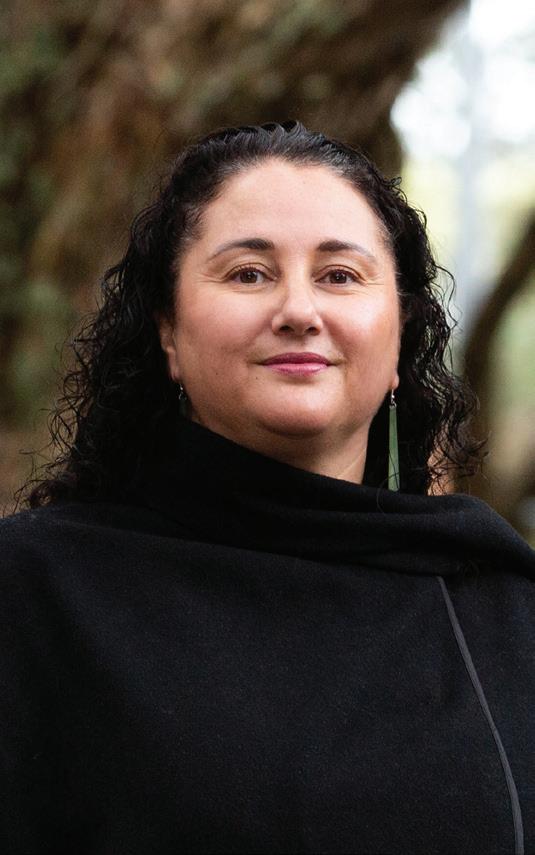
“A person with mana is somebody who upholds the mana of others in their interactions with them. The mana model encourages teachers to think about their classroom conditions and the school’s context. What is happening in all those spaces that honours young people’s authority to make decisions about their own lives and about the way they think?
“The idea is that this young person will eventually positively transform the world around them in some way. That should be the aim of education, to help children understand what they might contribute to the world in the future. Mana is about the maintenance of your mana through the ways that you impact others.”
The mana model is getting great pickup in schools because teachers are grateful to be able to think about young people in ways that aren’t just about their academic progress, but how they are becoming their authentic selves at school, says Melinda.

Grounded in the curriculum
Mental Health education and hauora for primary has just been published and can be purchased online. Both the primary and secondary resources, published by the New Zealand Council for Educational Research (NZCER), are grounded in mental health education lessons that provide kaiako and teachers with resources, inspiration, and ideas.
Activities for primary students include music, drama (role playing) and letter writing to families. The secondary school resource suggests learners have opportunities to be mental health agents for change.
“We’ve paid real attention to the kinds of activities and pedagogies that might engage young people.”
Both Melinda and Katie suggest how mental health education can be timetabled.
“Otherwise, it may not be afforded the mana and time it deserves. In secondary, unless a student is taking health and physical education, where else will they get mental health education unless they’ve chosen it as an option?
“In primary schools they can certainly timetable it into a weekly or fortnightly session where they explicitly talk about mental health strategies and approaches.”
With more than 300 pages in each of the school resources, Melinda suggests they will save teachers time and energy.
“We’re not telling teachers to go out and remedy the mental health problems of young people, because we can’t. But we can suggest ways to talk about mental health with young people, ways to teach them how to access the right kinds of help, that they can choose; and here are some resources that you can use to talk to them with,” concludes Melinda.
6 gazette.education.govt.nz
Dr Melinda Webber (Ngāti Whakaue, Ngāpuhi, Ngāti Kahu).
Dr Katie Fitzpatrick.
Mental Health Education Resources
Mental health education: A guide for teachers, leaders and school boards. Hpe.tki.org.nz.

Mental Health Education and Hauora: Teaching interpersonal skills, resilience, and wellbeing (Years 7– 11). Nzcer.org.nz.
Mental health and hauora for primary: Teaching interpersonal skills, resilience, and wellbeing (Years 1– 6). Nzcer.org.nz.
Ministry of Education information and resources, including Ka Ora | Ka Ako, Wellbeing@School, digital technology, period products in schools, and inclusion. Education.govt.nz.

18 September 2023
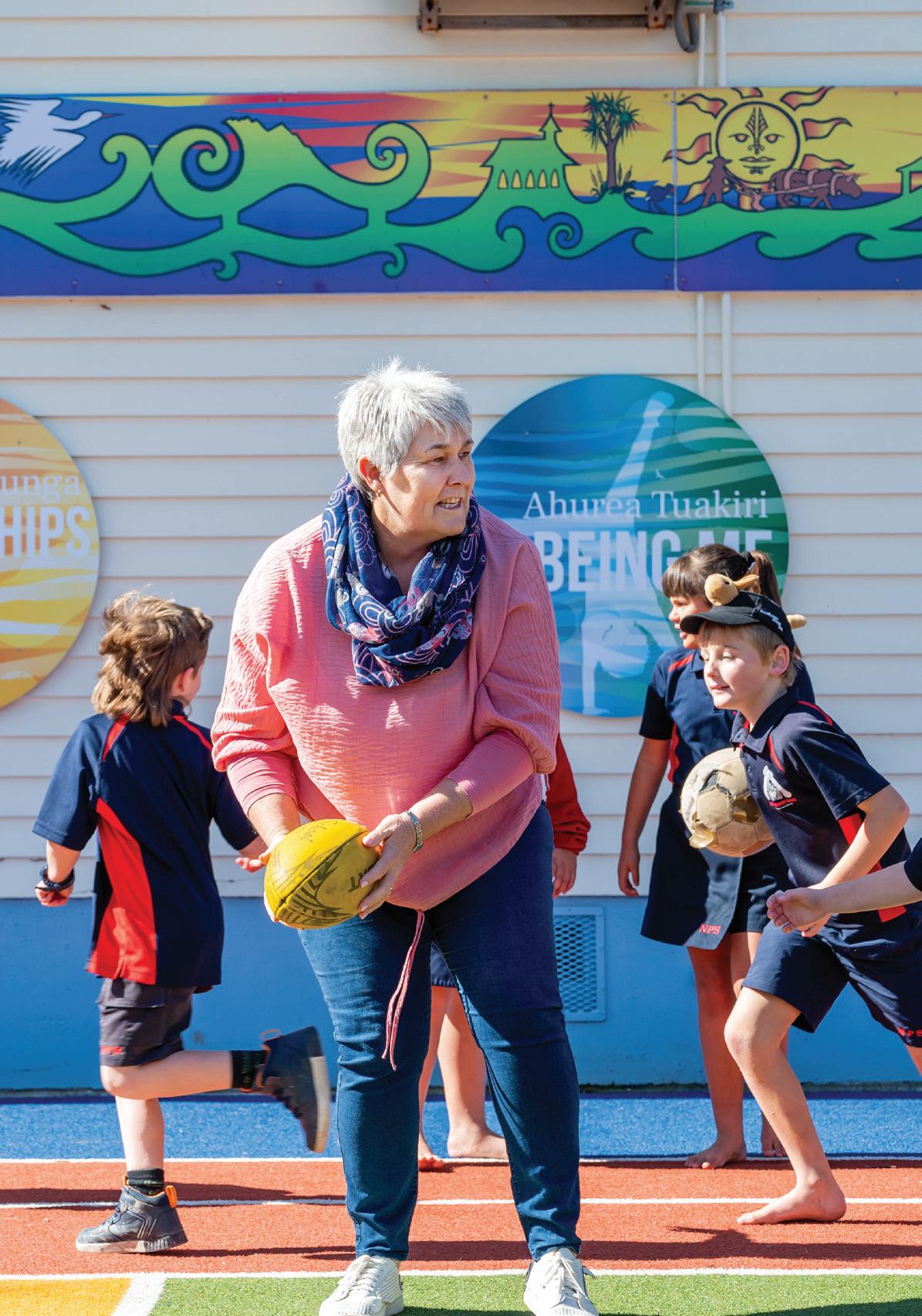 Teacher Karin Chambers joining in the play and games where ākonga are 'the boss'.
TRAUMA-INFORMED APPROACH
Teacher Karin Chambers joining in the play and games where ākonga are 'the boss'.
TRAUMA-INFORMED APPROACH
Creating a school with a heart for trauma
Ngatea Primary School went from reacting to behaviours to responding to individuals and found unexpected impacts from acknowledging trauma.
The day Ngatea principal Neil Fraser went from saying, “the system is broken, why won’t the Ministry of Education help?” to thinking, “Oh my goodness WE are the system” was a game changer in how his school responds to children and their trauma, and to children full stop.
Around the time of Covid the school was struggling with a few “severely challenging students”, recalls Neil.
“A teacher had been physically assaulted and we were dealing with several students who found it challenging to self-regulate. I was calling and calling the Ministry looking for answers and asking for help. And that was when I realised, the system is ourselves. That we needed to stop looking for a ‘spray and walk away’ type of drop-in one-off help and we needed to start looking at ourselves as to what we can do to help.
“Nearly three years on we’re proud to be a school that stopped seeing behaviours and started responding to our students as people.”
Ngatea School runs to Year 8 with a current roll of 330 students and a staff roll of 30. Surrounded by dairy farms, the semi-rural school sits on the banks of the Piako River on the Hauraki Plains between Paeroa and Auckland on State Highway 2.
Adaptability has always been a strength of staff and students at the school, says Neil.
“Teachers who come here have always had to be able to pivot as the populace is highly transitional. The first of June and the moving on of dairying families is an annual adjustment. Fifty percent of those in Year 8 didn’t start school here.”
Exploring good practice
The staff began learning what would become their trauma-healing teaching practice. First, they looked for other schools who were working from a traumainformed approach. From Geelong Grammar in Victoria, Australia, they learned about a wellbeing framework.
“This led us to Nathan Wallis, and from there we visited Fraser Crescent School in Upper Hutt near Rimutaka Prison, and Glenview School in Porirua. We also took a trip to Henry Hill School in Napier which managed their own school and community challenges with a positive and trauma-informed approach.
“It was Jase Williams from Henry Hill who said, ‘We have the audacity to believe that every child in the country comes through the gates at 9am ready to learn’. We had to understand the whys of a trauma-informed approach before we could put new strategies in place.”
Staff began reading books on trauma by Dr Bruce Perry, The Boy Who was Raised as a Dog and Making SPACE for Learning among others, on its impacts and how to help, says Neil.
“We learned as teachers what can trigger children. That the child in the classroom being spoken to in a raised voice may not get triggered, but it could dysregulate three other students elsewhere in the classroom. That higher pitched voices can trigger children so to aim for a calmer lower tone.”
Data-informed
Very early on the school took a survey of their students from Year 4–8.
9 Tukutuku Kōrero 18 September 2023
Top: With a wall of important themes to guide them, ākonga relish the chance to lead the fun and games.
Bottom: Wellbeing teacher Melissa Taaffe.
“I didn’t want to believe the literature, Making SPACE for Learning, when it said a quarter of your school population will have been affected by some sort of trauma. Then when we surveyed our students, it was exactly that. A quarter,” says Neil.
The Resilience Project survey gave the staff robust data. After implementing a range of key strategies to address some of the trends identified, a second survey was undertaken towards the end of term 1 this year.
“We were very pleased with the huge improvement seen across many of the targeted cohorts from the longitudinal data.
“Some of the key findings we tried to address were student-teacher relationships out of the classroom, students having trusted adults in their lives they can talk to, students being able to talk about things that upset them, and students getting along with people who are different to them, just to name a few.”
That data led to big changes, says Neil.
“We had teachers previously spending more time outside of the classroom walking a dysregulated student around the field to try and help them. Ngatea School then created a space called Te Punanga, which supports several students for varying reasons.
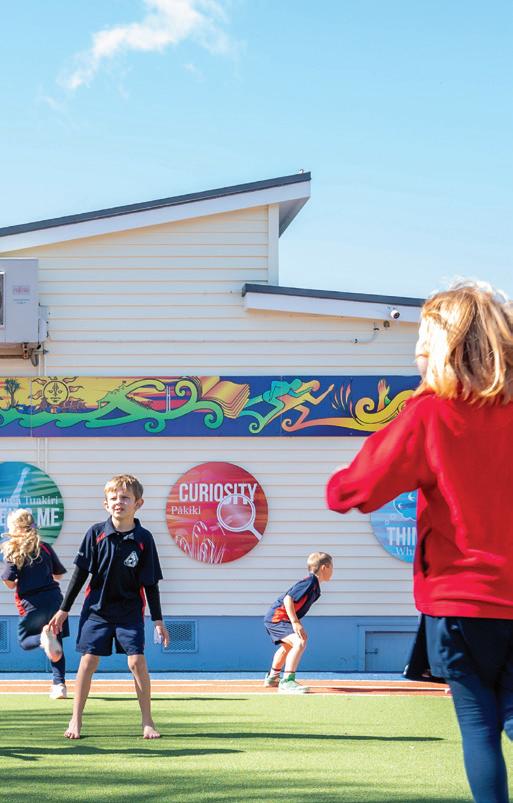
“We took Melissa Taaffe, a classroom teacher, out of her classroom, and she became our wellbeing/ hauora teacher who works in Te Punanga two days a week. Melissa is a member of the wellbeing team, one of four staff who meet once a week to discuss and plan for the wellbeing of our community.”
Melissa works with students struggling with social interactions, managing emotions, feeling overwhelmed with change and what’s happening in their lives, explains Neil.
“Students have developed really deep relationships with Melissa – we have some come
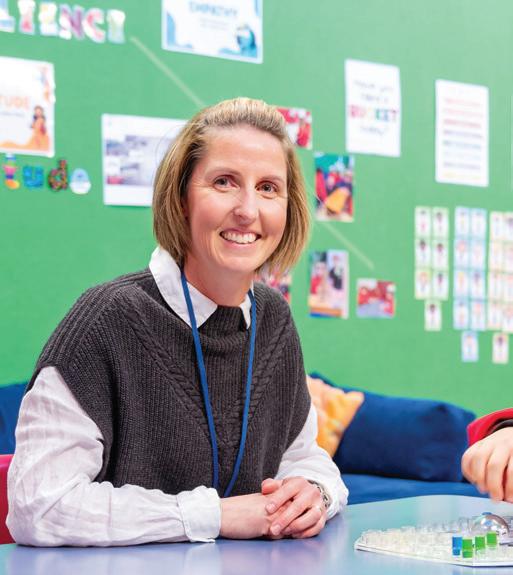
10 Education Gazette gazette.education.govt.nz
“I realised, the system is ourselves. That we needed to stop looking for a ‘spray and walk away’ type of drop-in one-off help and we needed to start looking at ourselves as to what we can do to help.”
Neil Fraser
back to the school once they’ve left just to visit her. Because of the way TP is she can dig really deep and teach the students how to manage their own systems, therefore students are ready to learn when they are in their classroom spaces.”
Child at the centre
The school has budgeted $20,000 to have a qualified play therapist in the school two days a week over the past two years.
Another powerful change has been changing the name and content of the student disciplinary code to ‘Understanding and Responding to Student Behaviour: a holistic approach’. This document was created with consultation from the community, the board and staff, and is a more positive approach to managing student behaviour.
Once a week, all the teachers go out into the playground and do 15 minutes of child-led play. They join in with a group of students and let them be the bosses of the play and the teachers go along with it.

“Teachers love it as much if not more than the children. It’s good to connect from that other perspective.”
Neil is also the chair of the Hauraki Kāhui Ako (Community of Learning). This has led to the cluster prioritising trauma-healing practice for 2023 to support the emotional and academic wellbeing of students.
As a part of that, the kāhui ako organised and hosted a Trauma Healing Practice Conference held at Hauraki Plains High School, with 360 attendees.
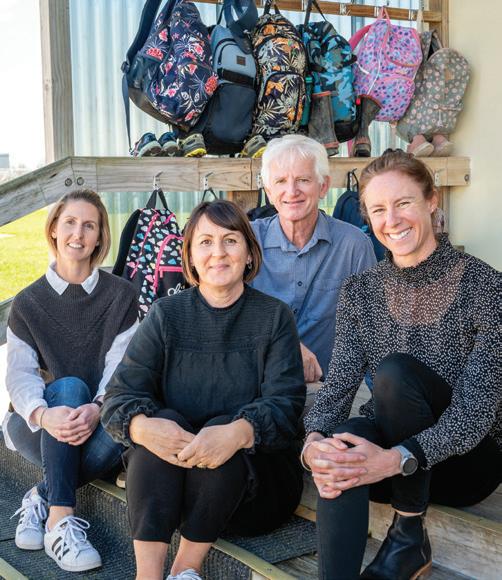
“We’re also fundraising to build a sensory forest. We’re on the lookout for some more mature trees if anyone has some.”
The school has also partnered with not-for-profit organisation Parenting Place, as one of their next vital steps is engaging with parents/caregivers.
“We plan on shoulder tapping those we think would be keen and who would really benefit to come to the course and workshops,” says Neil.
Powerful changes
A framed Springbok jersey hangs on the wall of the staffroom, and Neil explains how his South African roots – he moved here with his family in 1996 – may have played a part in the changes at the school.
“It did in that I came from a different system, so I knew there isn’t just one way to do things. As a school we don’t have to keep doing what we do.”
Neil says the powerful changes they are seeing in the school are at times hard won. And that wellbeing support for the teachers is on the to do list.
“We struggle with that … with our own wellbeing. Moving into this field, it’s very heavy. When you recognise trauma, you go deeper, and you have more compassion.”
11 Tukutuku Kōrero 18 September 2023
Top: The wellbeing team: Melissa Taaffe (wellbeing teacher), Kerri Heaven (learning support coordinator), Neil Fraser (principal) and Vicki Coles (deputy principal).
Bottom: Teacher Holly Lyndsay gets active with ākonga during child-led play.
MENTAL HEALTH AWARENESS
Five Ways for Five Days
Mental Health Awareness Week runs from 18 to 24 September in 2023, and this year’s theme highlights the five ways that people can look after their oranga and hauora –Me aro tonu, tukua, me kori tonu, me whakawhanaunga and me ako tonu.
Me aro tonu, take notice. Tukua, give. Me kori tonu, be active. Me whakawhanaunga, connect. Me ako tonu, keep learning. These are the five ways to wellbeing according to the Mental Health Foundation as part of Mental Health Awareness Week.
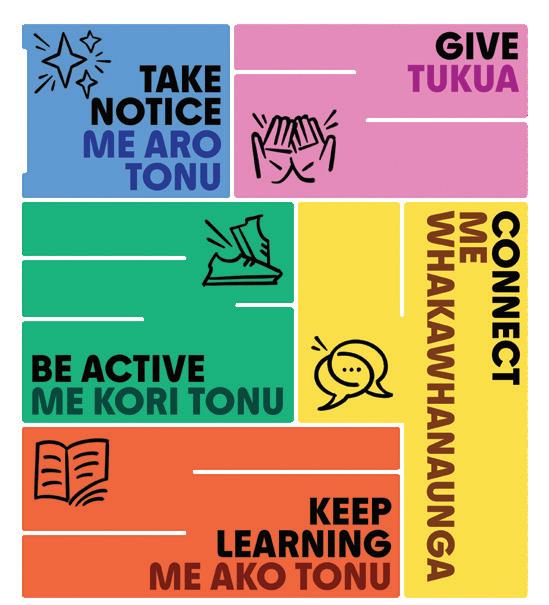
Mental Health Awareness Week is an important reminder that we all go through ups and downs in life and that’s OK. One in five New Zealanders experience a mental illness and/or addiction each year and it’s important to remember that with the right tautoko/support many people can and do recover.
Wellbeing isn’t just for people who have not experienced mental illness – it’s for everyone.
Take Notice
|
Me Aro Tonu – Monday
Take Notice refers to the practice of mindfulness. Mindfulness can be thought of as ‘open and receptive attention to, and awareness of, what is occurring in the present moment’. There is robust scientific evidence supporting mindfulness practice as beneficial to hauora.
Take notice of the things around you, remember the simple things that give joy – me aro tonu ki ngā mea māmā noa i ngākau harikoa ai koe.
Give | Tukua –
Tuesday
Give refers to actions based on kindness, altruism, or generosity. Carrying out acts of kindness boosts our happiness, life satisfaction, and overall wellbeing. When we help others, it gives us purpose and a sense of belonging.
Give your time, your words, your presence – tukua te wā ki a koe, ō kupu, ko koe tonu.
Active | Me Kori Tonu – Wednesday
Widely recognised as being crucial for physical health and fitness, being active is also a powerful mood booster and can not only make us feel good, but also enhance thinking and learning abilities.
Be active and do what you can, whāia te mea ka taea e koe. Move your mood – kia pai ake ō piropiro.
Connect | Me Whakawhanaunga – Thursday
Connect refers to making social connections, or whakawhanaungatanga. A sense of feeling connected, loved or belonging with others is strongly associated with better wellbeing and other health outcomes through
providing a sense of meaning, safety, support and purpose. Connect, talk and listen, me kōrero, me whakarongo. Be there – me whakawātea i a koe. Feel connected – me rongo i te whanaungatanga.
Keep Learning | Me Ako Tonu – Friday
Keep Learning refers to ‘exercising the mind’. Any activity that challenges thinking and expands consciousness improves cognition (ability to think). Evidence suggests that life-long learning can help protect against dementia, and learning or trying new things creates a sense of achievement, competence and stimulates engagement with the world around us.
Keep learning and embrace new experiences, awhitia te wheako hou. See opportunities, kimihia ngā ara hou.
For resources, activity ideas and more to help bring MHAW to life in your early learning service, school, kura or home, visit mhaw.nz.
12 Education Gazette gazette.education.govt.nz
Taking Action to Prevent Bullying
Bullying affects thousands of tamariki and rangatahi every year. With significant and sometimes life-long impacts on mental health, learning, behaviour and wellbeing, what can we do to protect our youth?
Aotearoa has one of the highest rates of youth bullying in the world, with around 36 percent of Year 5 and 38 percent of Year 9 students reporting they are bullied on a monthly basis (Caygill, R., Singh, S. and Hanlar, V. (2016); Chamberlain, M. (2019) as cited by Education Counts, 2019).

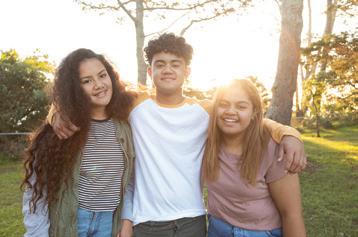
Research indicates that certain groups are most likely to be exposed to bullying, including: male; disabled; LGBTQIA+, particularly transgender students; New Zealand born; low achievers; and from a disadvantaged background (McGregor, A, and Webber, A. (2019) as cited in Education Counts, 2021).
Bullying is not something that happens once. It’s a deliberate, repetitive misuse of power that results in the intentional hurting of others. It can happen face to face or online, and includes physical, verbal, social or cyberbullying (Pink Shirt Day, n.d.)
Although bullying is common in our schools, it is important to be clear that it causes significant harm and is not a normal part of growing up (Bullying-Free NZ, n.d.)
Anyone can behave in a bullying way. Young people who bully can be any age, gender or culture, and from any kind of family situation. Some children may not realise their behaviour is bullying, they may be copying what they’ve seen others do.
It is also important to remember that young people who bully may have been bullied themselves, have low self-esteem, or find it hard to fit in. None of these reasons make bullying OK, but they do highlight that the reasons someone bullies are complex and varied.
We know from the research that prevention and early intervention minimise the impact on victims. It’s important to be aware of your school’s anti-bullying and behaviour management policies, as well as putting resources into nurturing positive behaviours and creating supportive environments.
So what can we do to help prevent or stop bullying?
1. Be observant
Look for signs that children are being bullied, remembering that this can be online as well as in person. Notice if children seem isolated, withdrawn, unhappy or nervous and check in with them or their whānau.
2. Take action
When a child shares they are being bullied, it’s important they are believed and that the information is acted upon immediately.
Take all forms of discriminatory language and intimidation (physical, written or verbal) seriously. Check your school policy and make sure systems are in place so that information is recorded and followed up.
Confidentiality is also important, so take steps to ensure the person sharing is protected from any negative consequences of telling an adult.
3. Involve parents and caregivers
The best outcomes for preventing and stopping bullying involve parents, caregivers, and the wider community (Cross, D., Runions, K., & Pearce, N. 2021). Make sure all students and their whānau understand how to report incidents of bullying as per your school’s anti-bullying policy.
4. Set positive expectations
Be clear and consistent around what’s expected in terms of behaviour and why. Consider ways to build students’ understanding around the impact of their actions.
5. Actively boost self esteem
Low self-esteem can lead to bullying behaviours and a reluctance to share what’s happening. Take steps each day to fill the buckets of your tamariki and support them to see each other’s strengths and similarities.
6. Celebrate diversity
When diversity is actively celebrated, it’s less likely to result in bullying behaviours. Ensuring all students are included and valued for who they are can help build empathy and compassion.
7. Be respectful
When we role model how to treat others with respect, we support tamariki to do the same. Acknowlede other people’s feelings and experiences, even if they are different to our own. Taking time to respond with active listening skills can help others feel seen, heard, understood and respected.
8. Encourage reaching out
It is very important that if bullying does happen, young people feel teachers and staff are approachable. It is important for them to feel confident they have done the right thing by reporting bullying, even if it’s not happening directly to them.
9. Build compassion
Foster an environment where kindness and compassion are nurtured. This might include the teaching of skills to support selfawareness, emotional regulation, responsible decision making, and healthy relationships.
10. Ask for help
Skylight has been providing support services for over 25 years and are proud to provide Awhi Mai Awhi Atu (Counselling in Schools). As part of this mahi, we can support students and staff to address bullying. We also offer specialist education and group programmes to build resilience, anger management and coping skills.
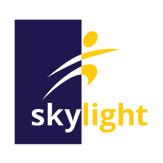
We are qualified and experienced counsellors accredited by professional associations.
If you’d like to learn more please reach out on 0800 299 100 or visit skylight.org.nz
Building resilient tamariki, rangatahi and whānau
ADVERTORIAL
STUDENT
Whakarongo ki tōku reo Engaging the voices of ākonga in hauora education
G
The programme helps guide schools through a change process to ensure kaiako have the confidence and support to expand their expertise to meet new challenges. It’s recently been extended until 2025, with revised goals and projects.
Storytelling lead Helen MacGougan says the programme was named Grow Waitaha in reference to the intent to collectively grow and transform the education sector.
“Learners at the centre of change is how we believe citywide educational transformation is most likely,” she says.
row Waitaha was created in post-earthquake Ōtautahi (Christchurch) with the aim to encourage all ākonga to thrive as cultural learners in a time when the school community was rebuilding itself.Tau tahi, tipu tahi – collaborating together, learning together is the foundation stone of Grow Waitaha mahi, and it’s linked to four pillars: futures, pathways, equity and inclusion, and wellbeing.
Helen explains the wellbeing pou focuses on empowering ākonga and kaiako with tools to support their own wellbeing, through fostering a sense of identity, belonging and place.
Inspired by this pou, a secondary student wellbeing network was created in 2020 with student-led events held and supported by the wider programme.
“The aim of the across-school networks that Grow Waitaha supports has always been that they become selfsustaining networks of kura, kaiako and ākonga,” says Helen.
Ākonga at Pareawa Banks Avenue School in Richmond, Ōtautahi enjoy flexible learning environments in their new school, which replaces their previous school damaged in the Christchurch earthquakes.

14 Education Gazette gazette.education.govt.nz
Education Gazette explores the Grow Waitaha programme in Canterbury and their newest newest resource, Whakarongo ki tōku reo: He kete tūhono ākonga ki te hauora | Hear my voice: A guide for engaging ākonga in wellbeing. We also highlight last year’s ākonga-led wellbeing hui. VOICE
Wellbeing Hui
In 2022, a group of high school ākonga noticed that Waitaha rangatahi were struggling to cope with the many overarching challenges the world faces today, from climate events, pandemics, lockdowns, casual and overt racism, to the ongoing trauma from the 15 March 2019 terror attack and the Christchurch 2010/11 earthquakes.
“Many rangatahi acknowledge that living with the reality of these events is an ongoing challenge. The future can feel quite grim,” says Helen.
Together, wellbeing leaders from St Andrew’s College and Hillmorton High School, Bonnie, Lida, Yuki, Dylan and Ngan, joined forces to co-design a special rangatahi-led hui.
They worked alongside Mahia te Aroha, an organisation born from the wrap-around compassion from the 15 March terror attack.
“The 2022 Christchurch Schools Wellbeing Hui was an example of confident and capable rangatahi coming together to make a difference with the support of their schools,” says Helen.

The goal of the hui was to enhance a sense of tūrangawaewae and belonging, based on Hillmorton High’s key school value.
“We felt there was an urgency to hear the voices of our rangatahi in Ōtautahi, especially around their thoughts on tūrangawaewae in Christchurch. We felt it was important to be able to have an open conversation around having a tūrangawaewae in such a multicultural city,” says Radha.
Eighty ākonga from Canterbury high schools attended the event, wearing their own clothes to combat any stereotypes that come from the Cantabrian joke, “What school are you from?”
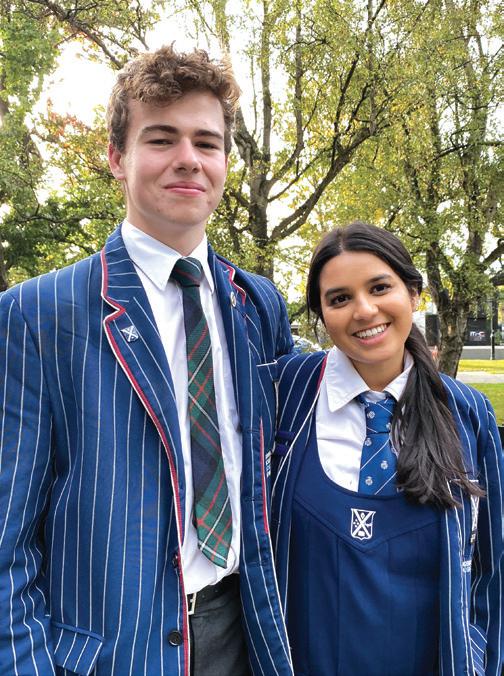
“You can imagine that if they’d all come in uniforms, they’d be sitting in their schools and they’d be identifiable, but without uniforms, they weren’t from a school. They were just people from Canterbury,” says Radha.
“I think to really understand other people’s feelings and experiences, you have to come away from the whole school idea.”
Connect and reflect
The hui started with icebreakers, allowing ākonga to get to know each other in a relaxed and fun atmosphere, ready to be vulnerable and take on challenging conversations.
Next, rangatahi heard speeches from different ākonga, including an award-winning slam poem by St Andrew’s student Lily (now Year 13) about her experience of everyday racism, and a talk by Sadra Sultani, now at the University of Canterbury, who shared her life as a young Muslim woman.
After each speech, rangatahi were organised into small groups and were encouraged to reflect and share their own personal experiences.
“While there are plenty of resources available to our rangatahi in terms of their mental health and wellbeing, the first step is to make people comfortable enough to open up. This was one of our main goals during not only the hui, but the planning process as well; creating a safe environment where it’s more than OK to speak up and reach out,” says Radha.
Because the event was designed and led by rangatahi, it
Top: Radha and Lachie, co-leaders of the rangatahiled Christchurch Schools Wellbeing Hui.
Bottom: The winner of Year 3–4 group entry DigiAwards 2022, Whītau School for their entry ‘Be Responsible - Look After Our Planet’.
15 Tukutuku Kōrero 18 September 2023
stood out from other events organised by kaiako. The focus was on empowering rangatahi to share their own voices and connect with each other.
“Especially those discussions which stem from asking the uncomfortable questions, and even just having a time and a place to have these all so important questions. Creating the hui with other ākonga also allowed us to bring forth the questions and conversations that we, as young people, felt necessary to answer,” says Lachlan.
Ngan says the hui provided young people with a platform to speak out, explaining that society tends to ignore the concerns of young people, being “too young to understand complicated problems”.
“Rangatahi should be encouraged and empowered to lead our generation into the future… our voices are important, and our input should be heard,” she says.
Ākonga left the hui knowing their tūrangawaewae in Waitaha, but there is room for improvement, and they can lead this change. Another hui is now in the works.
“We broke down invisible barriers and preconceptions with our honesty and passion, while tackling tough conversations and discussing solutions to make Ōtautahi a welcoming city for all rangatahi here,” says Ngan.
“We want to establish events such as these in the culture in Canterbury, so that all ākonga can benefit from these events,” adds Radha.
Educational tools
Since Grow Waitaha was established in 2015, the programme has worked to create educational tools for kaiako and ākonga to overcome wellbeing challenges.
Some of these resources include guides on how to empower and include gender-diverse ākonga.
The newest resource is called Whakarongo ki tōku reo: He kete tūhono ākonga ki te hauora| Hear my voice: A guide for engaging ākonga in wellbeing.
It’s designed to assist educators and ākonga to engage in wellbeing discussions and activities, all from the ākonga perspective.
The 2022 wellbeing hui highlighted the need for ākonga insight into decision-making processes and positive changes related to their hauora.
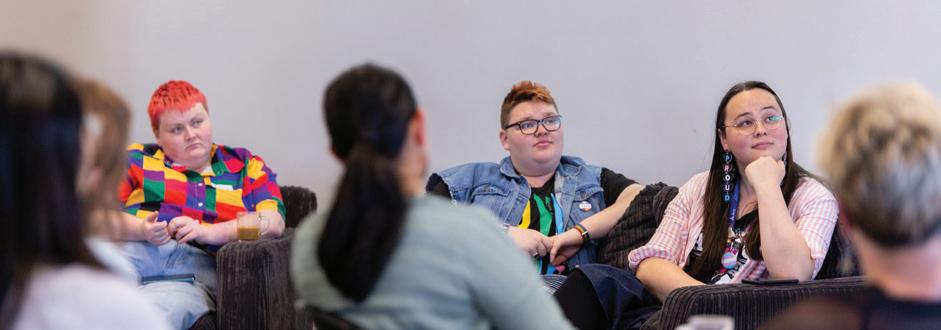
Guide creator Suzi Gould says the aim is to empower both educators and students to “collaboratively design meaningful approaches to enhance wellbeing in educational settings”.
“The resource was created to address the need for promoting hauora in educational settings and involving
students in discussions about their own wellbeing. It acknowledges the valuable insights that students possess about hauora, connection, and learning strategies that work for them.”
By involving ākonga directly in discussions and co-designing initiatives, the resource aims to both empower and motivate ākonga to take control of their own wellbeing.
The ākonga-centred guide, available now, can be used by ākonga from ages 4 to 12 years old.
Visit growwaitaha.co.nz for more information.
Inclusive Education for Neurodiverse Ākonga
This year, Grow Waitaha published a guide for kaiako, Inclusive Education for Neurodiverse Ākonga to accompany literature review and interview findings they published in May.
Educators in the region were interviewed to understand how their experience working with neurodiverse ākonga aligns with research into inclusive education. This helped to create a platform for those with lived experience to share knowledge and strategies that have worked for them.
The subsequent guide explores inclusive practice in the following areas:
» Prioritising and valuing relationships
» Developing learner agency
» Supporting ākonga to understand and manage their own behaviour
» Creating inclusive environments
» Embedding inclusive teaching strategies
» Supporting ākonga transitions
Read
16 Education Gazette gazette.education.govt.nz
the guide on their website
scan the QR code.
or
Gender diverse rangatahi share the ways we can create safer and more empowering places of learning.
After my Pause Breathe Smile training I was buzzing. It was a feeling of fulfilment, and I was so excited to implement the programme with children.
Soldiering on is a classic teacher trait that has unfortunately become the norm for many teachers throughout Aotearoa. Let’s flip the script and make sure we are also supporting teachers to invest in their wellbeing and flourish in life and work.
Pause Breathe Smile PLD includes Te Hauora o te Kaiako Educator Wellbeing. Learn about wellbeing and practice mindfulness through our Educator Wellbeing Course: ‘Breathe online’ and additional teacher-focused resources.
Find out how to train for FREE by emailing Lindy coordinator@pausebreathesmile.nz pausebreathesmile.nz

Delivered under licence from
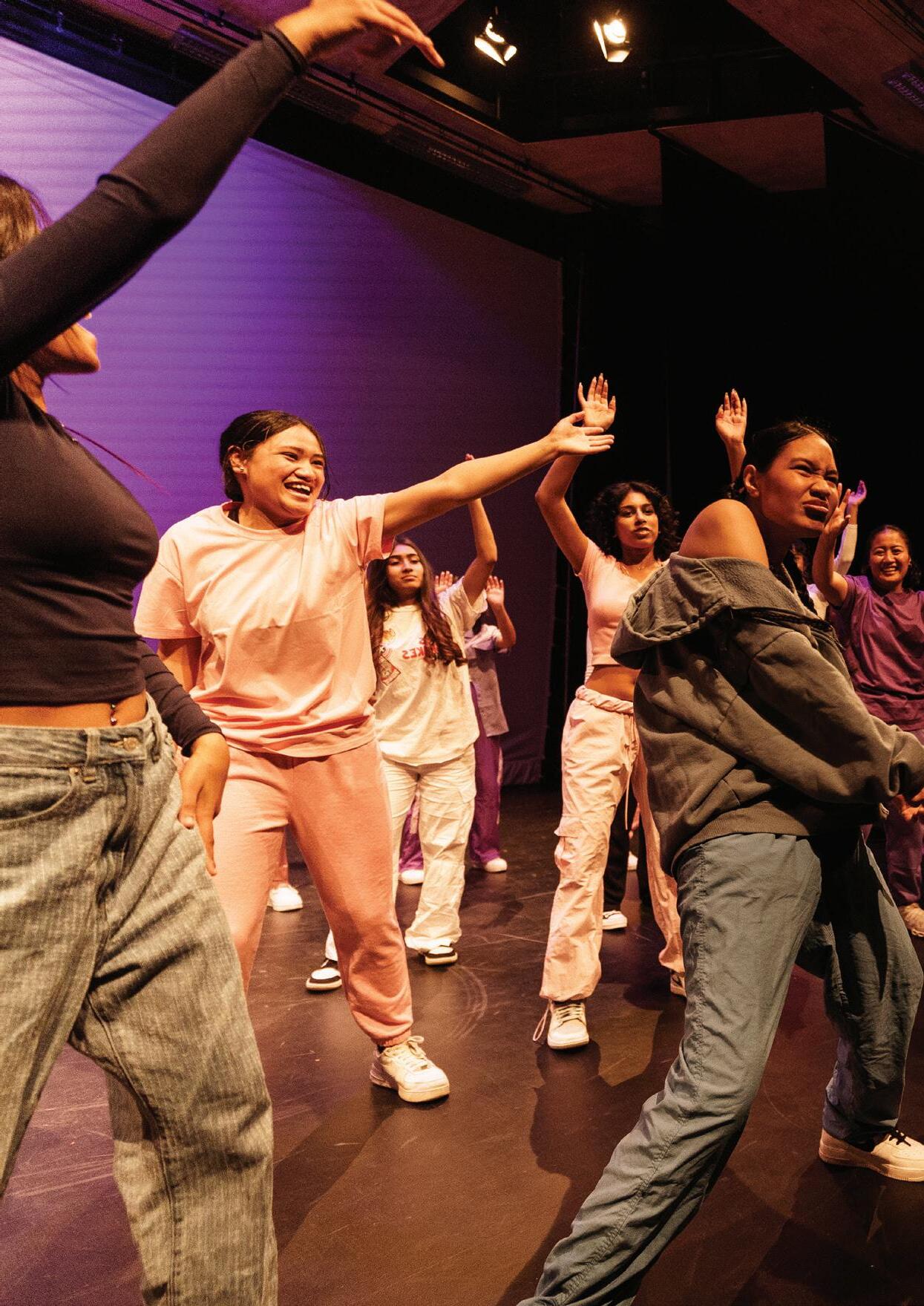
18 Education Gazette gazette.education.govt.nz
Self-expression and intergenerational connections in the arts
New Zealand schools are feeling the impact of engaging with arts practitioners to immerse students in enriching learning experiences with wide-ranging benefits.
Channelling frustration into fuel for fierce selfexpression through dance is part of what the Power Project at Auckland’s Aorere College is about.
From connecting with a successful, relatable dance practitioner to showcasing their skills at the culmination of a period of empowering learning, students are engaging in an emotional experience.
In a project that supports student achievement by developing their knowledge and skill in hip hop and street dance styles, Aorere College is supporting students to shine.
Lead teacher Kat Su’a Sagapolutele says, “Learning foundational dance skills before embarking on a collaborative choreographic experience with a creative artist will result in a richer experience and quality of show.
“Helping students discover a deeper understanding of these dance styles, and the mana they hold as socially created cultures in response to social injustices, will help empower ākonga in their own engagement with the genres.”
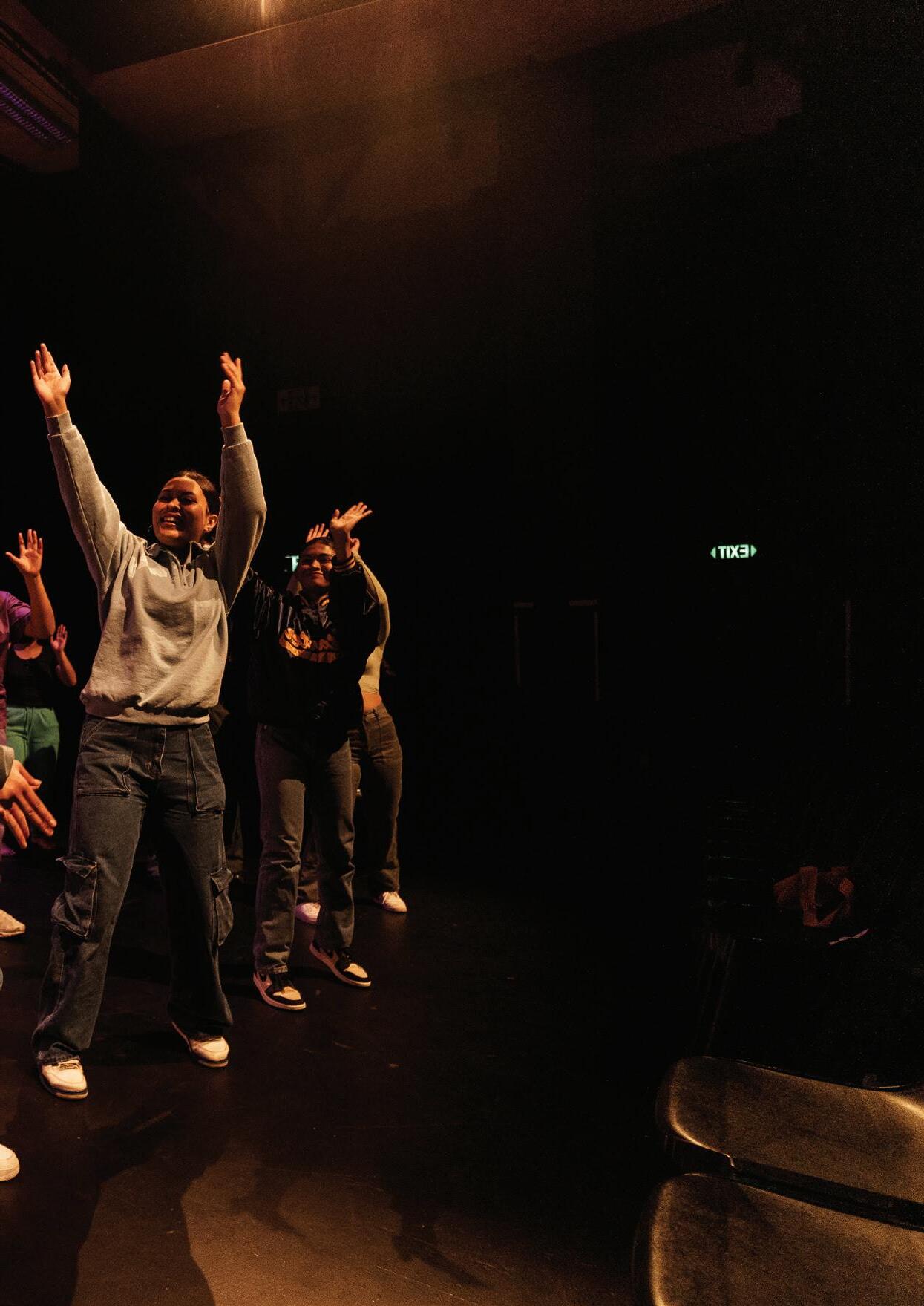
Empowering skills
Last year, Aorere College in Papatoetoe collaborated with Rosehill College in Pāpakura for a Creatives in Schools project.
This was delivered in conjunction with hip hop dancer Alex Page and lead teacher Lydia Rasmussen. It involved the creation and teaching of units targeted specifically for students who engaged in street dance forms.
“This project produced excellent results in terms of equipping our students with empowering knowledge and skills,” says Kat.
Students learned about the culture and history behind hip hop and street dance styles and worked on a creative project that combined practical lessons with historical and contextual knowledge.
19 Tukutuku Kōrero 18 September 2023
& THE ARTS
WELLBEING
Senior students from Aorere College leaving their emotions on stage. All photos in this article were taken by Ennaolla Paea.
“The vision, this year, is to introduce new knowledge as well as taking their knowledge further and expanding their artistic vision.
“Students are gaining valuable experience, collaborating with former world champion krump dancer Ken Vaega, who is both internationally acclaimed and a local to Māngere, Papatoetoe and Ōtara.
“Ken is also of Pasifika and Māori heritage and understands our ākonga and their lived and localised experience. Ken made incredibly strong connections with ākonga during this project. The students were also able to strengthen the sense of community within our school by collaborating across year levels and working together.”
Kat believes that students thrive when they work together on projects they can share with whānau and the community.
“They feel a huge sense of accomplishment and pride. After the last few years of Covid interruptions, this project provides a lift in morale and will hopefully increase engagement at school overall.”
It is important that we support them in their journey of exploration by equipping them with the correct technical and historical information of these genres, she adds.
Their initial exposure is generally at a surface level through social media, television and their community.
Without targeted and specific integration of the teaching regarding the purpose, origins, and significance of these styles, Kat says most of them remain unaware of the depths of the culture from which they are taking influence.
Lesley Smith
Wellbeing through self-expression
Workshops predominantly take place during class time and therefore only require a few days of release to cause the least possible disruption to students’ learning.
The school has three spaces in which to hold the workshops: two dance studios and the hall.
The culmination of the Power Project was a showcase event that took place in August at the Māngere Arts Centre, only a few minutes’ drive away from the school.


It was a complete success with students achieving highly in their assessments, experiencing a professional platform, and engaging whānau in their work.
“The integration of Ken’s continual presence throughout
20 Education Gazette gazette.education.govt.nz
“Connectedness is vital to us as human beings. The handing down of stories as knowledge makes our older adults feel valued and helps our younger generation to learn.”
Duet performed by Year 13 Aorere College students.
Year 11 dance students projecting power and control.
the project has helped guide teachers in the creation of resources that are specifically designed to help support students engage with the culture of, and the creative exploration and use of movements from, street dance forms,” says Kat.
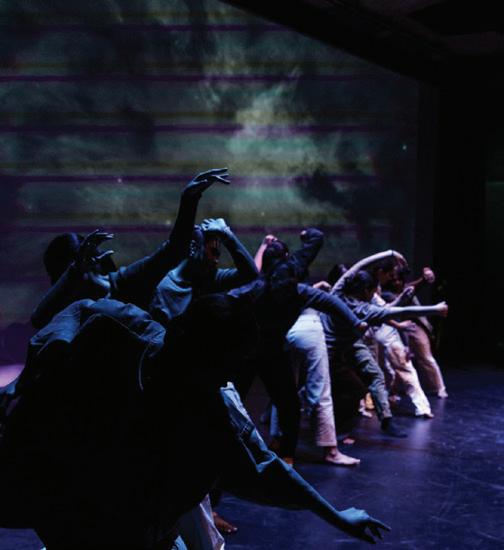
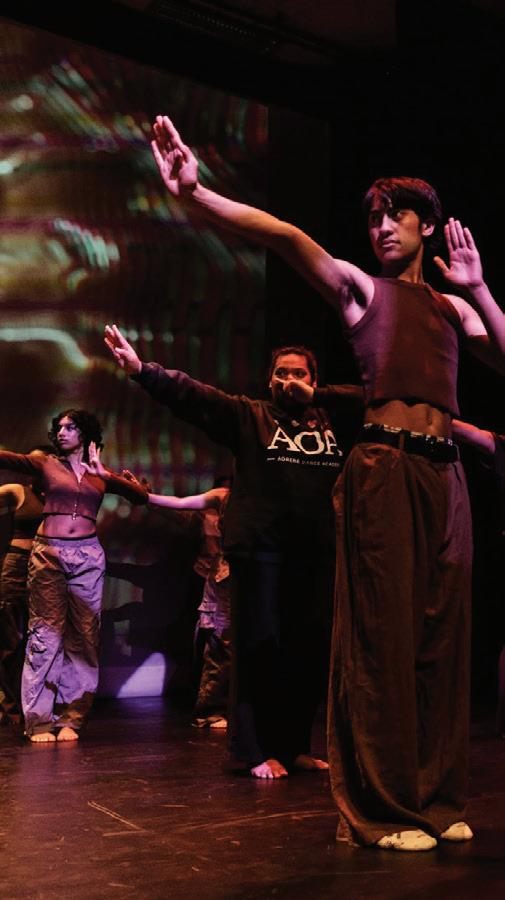
She says teachers have engaged in practical sessions and have used this opportunity to gain valuable professional development in technical skills, teaching tools and the choreographic process.
Krump for example is a great visual representation of one’s feelings through movement, explains Kat.
“People often think it’s ‘anger dance’ because it can be read in this way. But when tracing back its history in LA, we understand why it is what it is. It was a dance form of survival, and frustration. It is self-expression in its purest form. So sharing elements of Krump with our students whether they decide to use the form itself doesn’t matter, they are now equipped and unlocked in a completely new way of expression.”
She adds, “An avenue for self-expression helps with mental health and wellbeing; providing a safe space for young people to express themselves and ‘let it out’.”
Connected Project
Across the motu in Hastings, art is also being used to support student wellbeing but through the medium of film at Hastings Intermediate School.
The overarching educational aim of the Connected Project is to bring together older adults with youth in a meaningful way.
Principal and lead teacher on the project Lesley Smith says, “It enables our older adults to share their story in a guided approach and break down generational barriers. Then it constructs learning experiences that are local and curriculum-specific, to enable schools and youth to connect and create their own story in response.”
Through an extensive interviewing process, carried out in person and online where necessary, students learn, in first person, the stories of older people. Each interview is provided a focus and theme for discussion by the Connected Project team.
These interviews are filmed, with the Connected team then editing together 7–15-minute pieces of footage that captures the essence of the older adult’s story.
“For example, we’ve captured stories of experiencing the 1931 earthquake, getting your licence at the age of 14, taking photographs in the 1950/60s, the significance of crafting and so much more,” says Lesley.
“Our intention is always to have older adults and youth come together for a face-to-face conversation. However, living in a Covid world, we have utilised technology to ensure we can progress no matter what the needs of the participants are.”
Intergenerational storytelling
Following a theme of connectedness, the project is allowing intergenerational dialogue to take place, providing access to different generational experiences and perspectives, as well as developing communication skills, empathy and more.
“Connectedness is vital to us as human beings,” says
21 Tukutuku Kōrero 18 September 2023
Year 12 students reaching for new pathways and heights.
Year 13s perform a dance showcasing collaboration and support.
Lesley. “The handing down of stories as knowledge makes our older adults feel valued and helps our younger generation to learn.
“Studies show that some of the loneliest, least connected people in our community are drawn from these two groups: youth and older adults. Older adults can have limited mobility, limited funds and limited understanding of technology. Teenagers have the technology but can lack the social maturity and skills to negotiate a place in society that they can call their own.
“The Connected Project is a platform to bring these groups together through the power of storytelling.”
Hastings Intermediate has been collaborating with a diverse range of organisations to support the Connected Project.
The creative involved in the project delivery is The Write Coach, and the venue and support organisation is Toitoi Hawke’s Bay Arts and Events Centre. The school found its links to older adults via the Positive Aging Trust.

Lesley says all parties involved have contributed greatly to the project in their input and support to result in a high standard of outcomes for all participants: young, old, and in between.
PLD opportunity
Another welcome, valuable offshoot of the project has been the creation of professional learning opportunities for educators.
“Through working on the Connected Project, educators have found they have been able to build their own subject specific or area of interest, in line with the programme,” says Lesley.
Establishing relationships within the community to find ways to connect older adults and youth together has provided fundamental benefit, has extended networks and created a greater depth of understanding of lived experience.
“We are proud to have been building safe environments for both older adults and youth, so that they feel comfortable in sharing their story,” says Lesley. The school has provided formative feedback and opportunities for students to present their work to develop their final outcomes.
A presentation of the mahi is due to take place at the end of the school year at Toitoi Hawke’s Bay Arts and Events Centre. This will provide a valuable opportunity to share with participants and the wider community.
Lesley believes the Connected Project is timely in its breaking down of generational barriers and stereotypes.
22 Education Gazette gazette.education.govt.nz
Year 13 student Quensa opens the show with an empowering solo.
“It helps break down the ‘boomer vs millennial’ thinking, creating greater understanding between two generations, and cultivating deeper mutual respect.”
She feels this is of ‘great wellbeing benefit for both the older adults and young people’.
Mindful of using best practice throughout, to ensure that the process is robust, Lesley sees the outcome of this work for older adults, schools and students is undoubtedly of high value.
“These are local people, sharing local stories, captured in film.”
Creatives in Schools
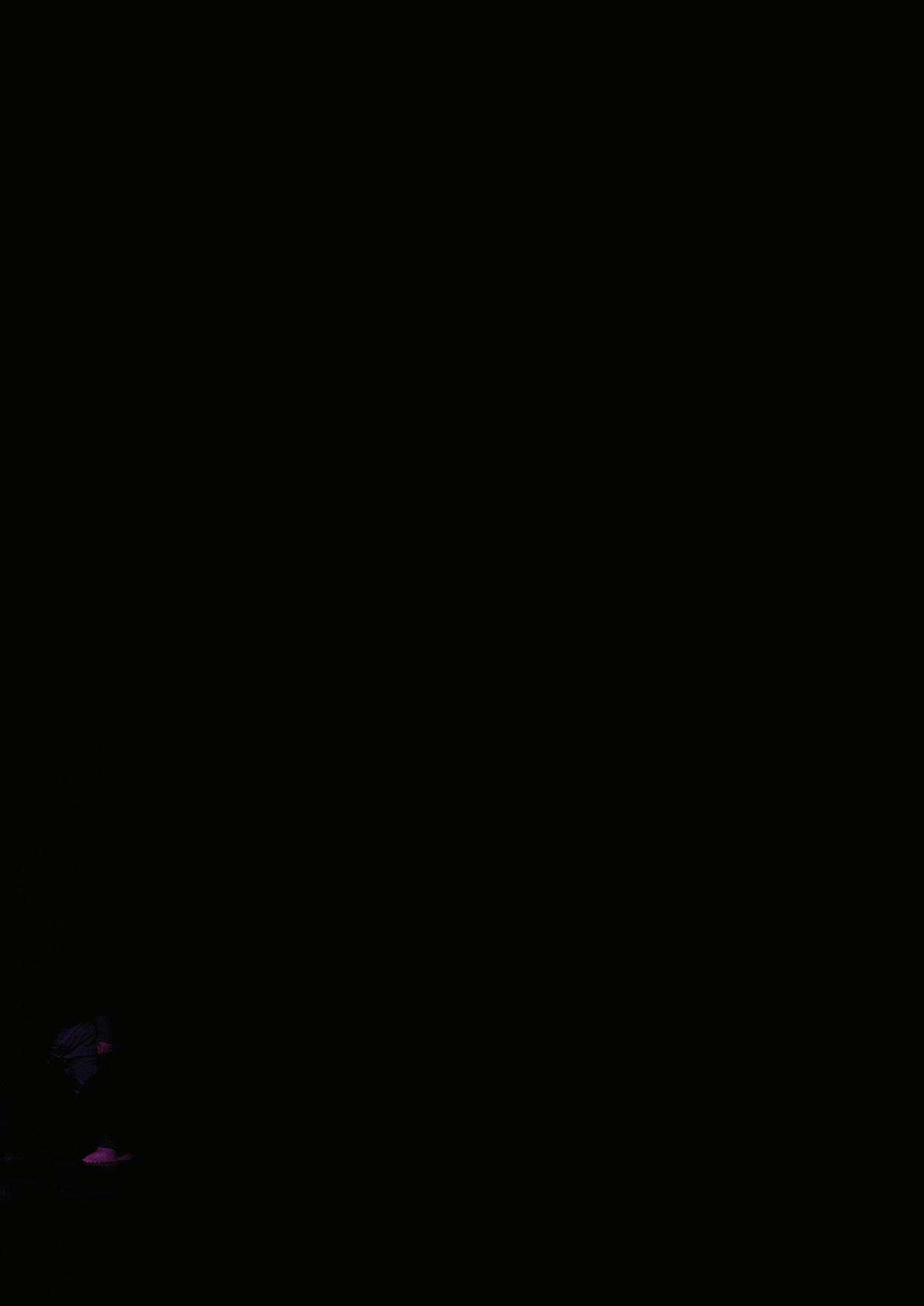
The Creatives in Schools programme enables kura and schools to provide learning experiences that enhance ākonga wellbeing and help develop their communication, collaboration, and creative thinking skills.
Applications for 2024 projects have now closed but Creatives in Schools will continue to be available each year for kura and schools to apply for.

The application period will run each June to August. Projects that are selected each round will be implemented in the following school year. We encourage principals and teachers to include these timeframes in their school planning calendar if they are keen to run a creative project.
For more information, visit creativesinschools.tki.org.nz
Margaret Blackwell Travel Fellowship 2023
A $20,000 fellowship for early childhood practitioners. Applications open until 5pm, Thursday October 12
23 Tukutuku Kōrero 18 September 2023
“An avenue for self-expression helps with mental health and wellbeing; providing a safe space for young people to express themselves and ‘let it out’.”
Kat Su’a Sagapolutele
APPLY AT nzcer.org.nz/blackwell
Students put social and emotional change on the cards
Visionary business development and mental health are at the core of a Taradale High School trio’s community wellbeing initiative under the Young Enterprise Scheme (YES).

For their 2023 YES competition entry, Year 13 students Tom, Liv and Elizabeth created a teaching and wellbeing tool designed to encourage discussions around feelings and emotions.
The product comprises a pack of 25 emotion-themed cards in English and te reo Māori.
The face of each card has a colourful graphic and designated emotion. The flip side features a scenario with
starting points to help parents, teachers, counsellors and other professionals in discussions with youth about their feelings.
One card, that depicts a thrilled figure with sunbeams in the background, is titled “excited/manahau”.
“Ella is feeling excited because she is going to Gisborne,” reads the scenario on the other side of the card. “What should she do?”
Suggested possibilities are “express her excitement to her friends” and “write down some activities and things she wants to do and see when she gets there”.
“What would you do in this situation and why?”
24 Education Gazette gazette.education.govt.nz
STUDENT AGENCY
Ākonga in Napier have used their Young Enterprise Scheme journey to support the health and wellbeing of others; creating a tool to help young people better express their emotions and lead social change – Pūkare Cards.
Under the Young Enterprise Scheme, Year 13 students Tom, Liv and Elizabeth created Pūkare Cards. Photo by Adam Gregory.
These are starting points for discussion. The student is invited to forward their own scenario should they wish to do so.
“Our business is dedicated to leading important social change,” says Tom, chief executive of the Pūkare Cards project.
“The aim is to normalise talking about feelings and mental health from a young age. We’re aiming for a wide reach into different communities, and to encourage people to speak te reo Māori.”

Entrepreneurial mindset
The Pūkare Cards enterprise began early last year as part of the YES programme available to Taradale High School’s Year 12 economics students.
The group began with four randomly allocated students. Jasmine was initially part of the team but has since relocated to Auckland.
The programme offers students an authentic learning experience that develops their entrepreneurial mindset and helps build transferable skills.
After brainstorming business ideas for a YES competition submission, the group eventually agreed on the emotion-based discussion cards concept.
“We considered things that would have helped us and of what people need. We’ve all had struggles communicating feelings and that led to the emotion cards idea,” says Liv.
A product that embraced diversity, and was affordable, was a strong focus for the team.
“When we came to deciding on a name, we looked in the Māori dictionary for words to do with emotions,” says Tom.
Pūkare was a good fit. It means to be evocative and express emotions.
Getting it right
The team discussed the cards’ content with two psychologists, says Elizabeth.
“They made sure our scenarios and content were appropriate. A lot of people, including cultural advisors, are involved with the cards’ design and creation.”
“It’s been a long process because we have to check everything is correct,” says Tom. “We contacted Te Whatu Ora, then universities and found a psychiatrist studying towards a Ph.D at Victoria University.
“All our content was checked by Napier City Council councillor and Ngāti Paarau Hapu Trust chairman Chad Tareha. He did all the te reo translations. Although it’s a Te Matau-a-Māui Hawke’s Bay dialect, it’s known throughout the motu.”
Finding a graphic designer who could work within the team’s budget was a challenge. Through an online freelance service, the team contracted a UK based designer.
After about 10 revisions to the graphics, the first Pūkare Cards design was complete. A community grant from Hastings Regional Council funded production of the original 68 packs of cards and information sheets for each pack.

25 Tukutuku Kōrero 18 September 2023
Each pack is made up of a box with colourful discussion starter cards with the names of emotions in English and te reo Māori, and an information pamphlet.
A card with a discussion starter in English and te reo Māori for the emotional state ‘excited’. On the flip side is a scenario with starting points to help adults in discussions with youth about their feelings.
Cards and boxes are printed locally and so far, bundles of four packs of Pūkare Cards have been distributed free to 17 schools.
The Pūkare Initiative
Last term, accompanied by Te Whatu Ora staff, Tom, Liv and Elizabeth visited Tamatea Intermediate. They also recently visited Puketapu School.
The visits were part of the team’s Pūkare Initiative, a youth-led mental health initiative that is a part of the business and brings in the social enterprise aspect, says Tom.
“The Pūkare Initiative was started this year and is separate from the cards. We want to normalise talking about feelings from a young age. We thought a good way to interact with young people, spread our messages and inspire students to speak up would be through this initiative.
“We inspire, empower and encourage the students that it is OK to ask for help and not something to be ashamed of.”
When talking to students, the team opens discussion by talking about their own experiences.
Elizabeth talks about the racism she has experienced while growing up, and Liv talks about her disability and the bullying she experienced at primary and intermediate school.
“I talk about my ADHD and struggles I faced because my brain works differently, which is a good thing, but I felt there was a lack of support,” says Tom.
“We tell our students it’s OK to be different. We aim to give them confidence and inspire them to do so.”
“The goal is to see how these cards could have helped us,” adds Elizabeth.
Presentations to students at the two schools was a matter of trial and error, but went well, says Elizabeth.
The team learned to make their presentations smoother, says Liv.
“We’re used to pitching to adults in a five-minute window but found students got disengaged quickly so we broke it up with activities, like stretches.”
“We’ve started to get feedback,” says Tom. “One suggestion is to maybe create more positive emotion cards.”
Stronger boxes is another suggestion.
“One piece of advice we’ve had is to develop resources so teachers know how to use the cards,” says Elizabeth.
The QR code on the flyer that accompanies each pack links to the Pūkare Cards website.
“In this day and age people don’t want to type out a URL address,” says Liv. “We plan to add more activities to the website, and we plan to upload a PDF teachers can download.”
Leading social change
Now in the second year of participation in the YES competition, the Pūkare Cards team is working on Tongan language-based emotion cards.
“Each year, you’re to come up with a new product or develop an existing product,” says Liv. “So, we developed cards in Tongan as well.”
Some redesign was needed for the Tongan-based cards.
“On some of the cards the emotional states are different from the original pack because they don’t always directly translate,” says Tom. “For example, ‘silly’ doesn’t translate well so we changed it to, ‘cheerful’.
“For the Tongan cards we made sure we used the right phrasing, and we have to make sure we’re not putting our views on them. We also have to do a translation sheet to go with the pack.”
The team updates the youth-led initiative’s social media platforms Instagram, Facebook and LinkedIn three times a week, says Liv.
“We post tips and tricks, quotes and other things that might be useful.”
At $22 a pack the team has so far made more than $15,000 in sales. Profit remaining after design and production costs, and the 25 percent tax paid to YES, is put back into product development, says Liv.
“The business is turning into a social enterprise. It’s a business with a kaupapa of leading social change. Our goal is to inspire 1,000 students.”
The Pūkare Cards enterprise was acknowledged at the YES regional awards and national awards evening last year, with the Pūkare Cards team winning the BP national excellence award for social enterprise.
Tom was announced as YES East Coast entrepreneur of the year.
26 Education Gazette gazette.education.govt.nz
“The aim is to normalise talking about feelings and mental health from a young age. We’re aiming for a wide reach into different communities, and to encourage people to speak te reo Māori.”
Tom Little
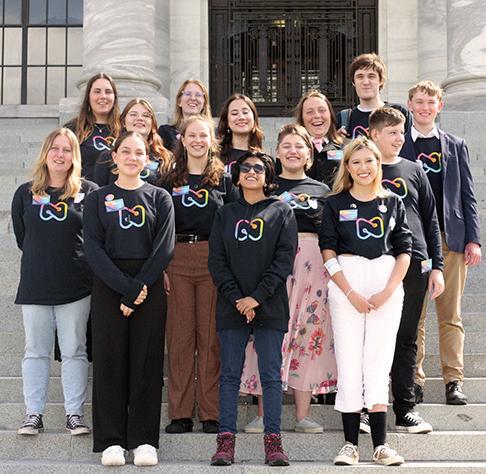

27 Tukutuku Kōrero 18 September 2023 Read more about how Tom and his fellow Young Neurodiversity Champions are standing up for the rights of all neurodiverse young people in Aotearoa. Visit gazette.education.govt.nz or scan the QR Code. For more information about student leadership, activists and support groups, see the Social ethos and environment section in Mental health education: A guide for teachers, leaders and school boards (tki.org.nz).
Champions
Champions for neurodiversity Tāpiri ki ō whiwhinga NCEA i te raumati Top up your NCEA credits Kia tuihono tō ako ki te Kura Raumati. Study online with Te Kura Summer School. Don’t let a few NCEA credits stop you from going on to further study, training or employment in 2024. We warmly invite schools to work in partnership with us. Please email summerschool@tekura.school.nz to enquire. Te Aho o Te Kura Pounamu 0800 65 99 88 | www.tekura.school.nz/summerschool Registrations open November 2023.
Young Neurodiversity
at Parliament in March 2023. Tom is pictured on the right.
Strengthening community connections at Papakura Marae

Papakura Marae is undoubtedly a pillar of its community, offering 51 community services, including a GP clinic, weekly community dinners, and driving lessons. Now, through a growing collaboration with the Healthy Active Learning team at CLM Community Sport, the urban marae is using the draw of physical activity to connect with schools in the area in new ways.
life
Matariki was brought to
for ākonga in the pūrakau held in the wharenui.
MARAE CONNECTIONS
It’s a foggy morning in term 3 and Papakura Marae has formally welcomed on 80 ākonga from four local primary and intermediate schools (the majority within walking distance) for a Matariki celebration.
Following a pōwhiri, ākonga have learned more about the celebration post boil-up in the wharekai, they are making their way around taonga tākaro (Māori games) stations –with the rain not stopping them getting active.
There’s ringa kemu (hand games), i te timatanga (rhythm and hand games connected to the pūrakau of Rangi and Papa), whai (string games), tī kouka (Māori play using natural resources), and rakau kemu (stick games).
“For us the marae is that oasis where whānau can feel connected, feel engaged, not be judged, and feel welcome,” says marae CEO Tony Kake.
“In a year we probably deal with over 40,000 people through the marae – of all ages, from hapū tanga through to tangi. We are here to support our community, but most importantly our tamariki for they are the next generation.”
Milestone connection
This day in term 3 marks an exciting milestone. Although the marae has close relationships with many schools in the area this is the first the time these students have been formally welcomed on.
The idea to connect ākonga with the marae through
physical activity was born from a successful kī-o-rahi pilot the marae ran with CLM Community Sport earlier in the year.
“Through that programme the idea came up about integrating schools here at the marae to inform them, to give them more knowledge, and more confidence about what being on a marae means. What a pōwhiri process is,” says Dee Clark.
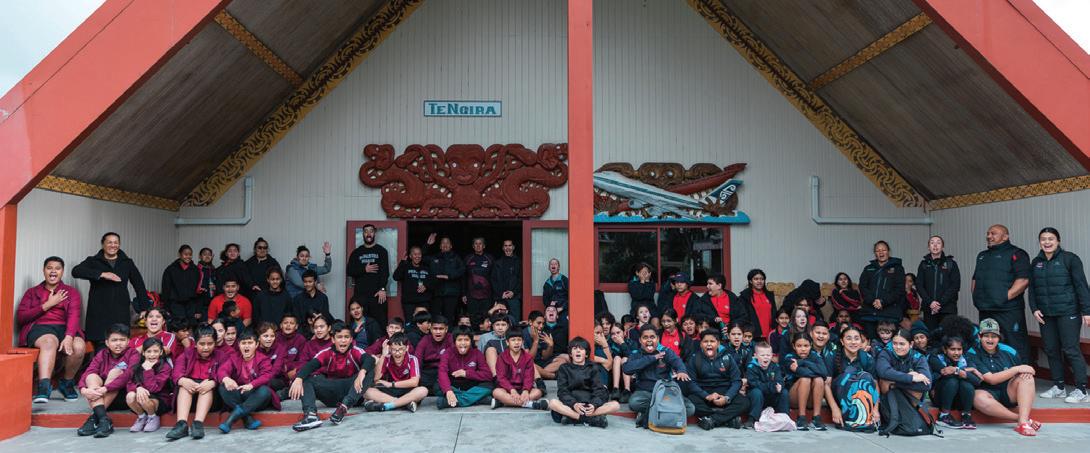
Dee is the Whānau Ora team lead at the marae and organised the Matariki event with CLM Healthy Active Learning community connector Shyanne Thompson.
Dee says the importance of the day was to open the doors to tamariki and to say “this is your home too. Come and see us if you need us or tell mum and dad about us. It’s an extension of aroha”.
Shyanne agrees, saying, “I think it’s really important for the tamariki to understand they are really important parts of this community, and they are the centre of everything this marae is about – supporting tamariki and rangatahi.
“Being told from the marae that this is their marae now, this is their whare, and they are welcome here anytime is just really special.”
As a Healthy Active Learning community connector, Shyanne’s role is to support schools to develop quality connections with their community to enhance tamariki wellbeing.
29 Tukutuku Kōrero 18 September 2023
“We are here to support our community, but most importantly our tamariki for they are the next generation.”
Tony Kake, Papakura Marae CEO
“1,2,3 pukana.” Students from Edmund Hillary School, Ngākōroa School, Papakura Intermediate and Redhill School were told “this is your marae now” before connecting with each other and Te Ao Māori through taonga tākaro.
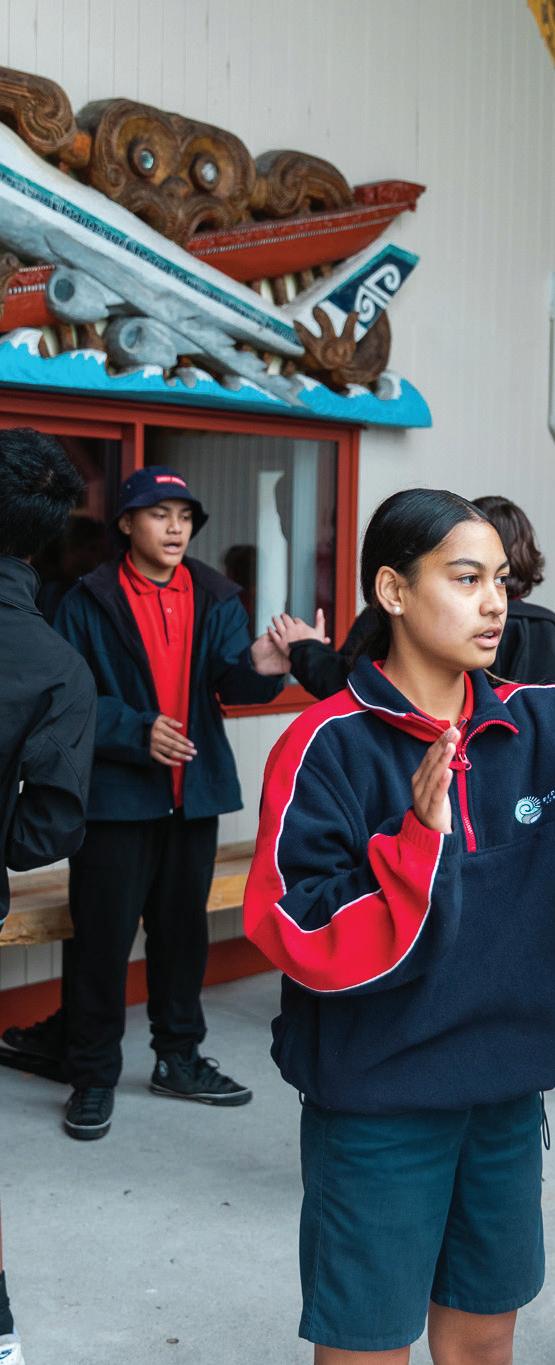
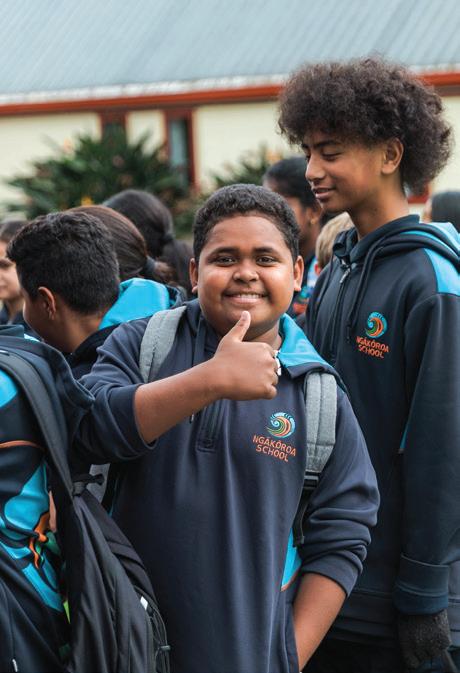
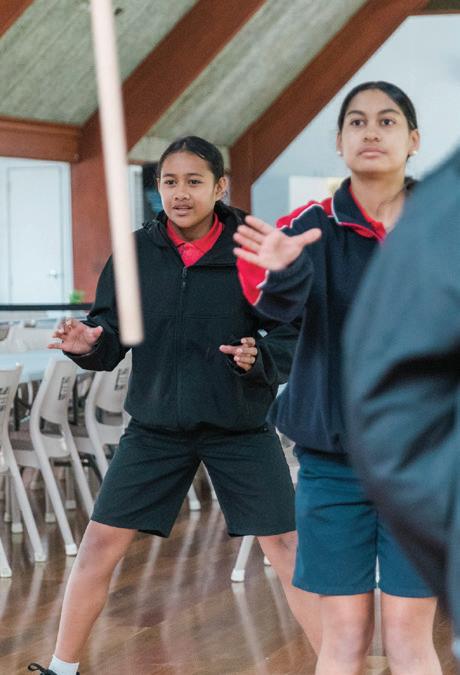
30 Education Gazette gazette.education.govt.nz
Top left: George, 13, says this was his first time on a marae and he enjoyed the chance to connect with other schools. He has learned the wharenui was a sacred space where you had to respect each other, and your ancestors.
Bottom left: Rakau kemu (stick games) in the wharekai.
Right: Ringa kemu (hand games) outside the wharenui.
Ultimately how she does that is guided by their wants and needs. And, she says, schools have identified they want to connect with the marae in new ways – through physically spending time on it.
Wiremu Turner, a kaiako at Papakura Intermediate, attended with 20 of his ākonga. The school has an existing relationship with the marae, and Wiremu spoke on behalf of the schools at the pōwhiri, but only a handful students have been on before – and never inside the wharenui.
Wiremu says when schools connect with marae the wellbeing of tamariki is always enhanced.

“Each school has their own way of catering for the wellbeing of their tamariki but when the marae is involved it just takes it a step above.
“It works both ways – for those who really haven’t experienced marae and for those who have but are able to introduce their friends to things we do on marae.”
Ākonga feel the aroha
One of Wiremu’s students, Kaleb (Ngāti Porou), has never been onto Papakura Marae before – although he has spent time on his own in Rotorua.
The 13-year-old says he enjoyed the chance to hang out with his mates on a marae and had fun learning about Matariki through the stories held in the wharenui. He also says that playing games about Matariki helped him learn.
“I enjoyed the string games. And we had some boil up –it was nice. It’s been a cool day.”
He says he would like to come back to the marae and that, when he passed it in the future, he would think about the day and his culture – “which is Māori”.
“I am proud to be Māori and I’ve always lived in Papakura. Papakura will always be my home town.”
Thirteen-year-old George, a student at Ngākōroa School, has never been on marae. He says he has learned that it was about more than “people coming in and just singing and talking to other people”.
“I have found out it’s something more. It’s meeting up with your friends, family, catching up with each other and all that fun stuff.”
He also learned lots of new things about Māori culture –including kupu (words), games, and even a new haka.
He says he would love to come back.
“That would make me feel so great so I can meet up with other people, meet new friends, eat with them, and share all the things that I’ve done.”
For George’s kaiako, Kate Lewis, the opportunity for herself and tamariki to connect with other schools and
31 Tukutuku Kōrero 18 September 2023
“I have found out it’s something more. It’s meeting up with your friends, family, catching up with each other and all that fun stuff.”
George, 13
learn more about the role the marae played in the Papakura community had been a highlight. Particularly as Ngākōroa only opened in 2022.
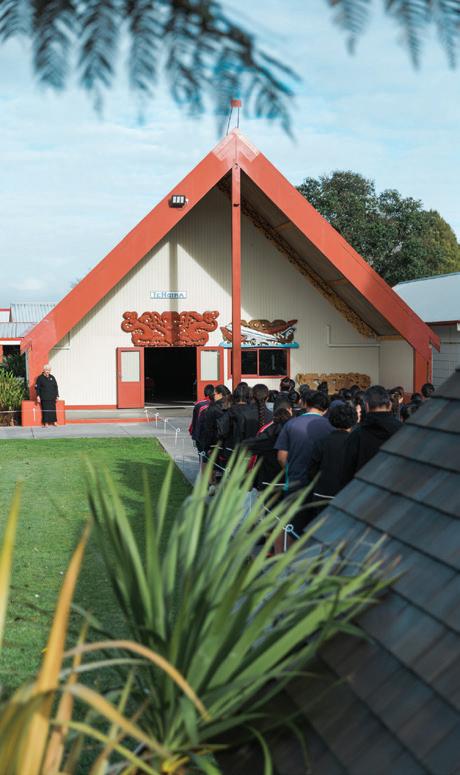
“It’s just good for the soul to connect. Not only with ourselves and who we are but with the wider community.
“One of our school values is kaitiakitanga. An aspect of that value is being proud of who you are and where you come from and embracing your culture and celebrating and sharing it with the community.”
Kate says Shyanne, who has been supporting the school to create a quality play, sport, and physical activity environment, had been paramount to making the connection with the marae happen.
“I love that Shy saw the natural connection with our school values and the opportunity to embrace that with a marae visit.”
Whakawhanaungatanga
For other schools wanting to build authentic relationships with their local marae, Shyanne says it all comes down to whakawhanaungatanga.
“It’s about putting your hand up, not out. It’s really important to connect with the marae first and sit down and understand their needs and then go from there.”
Dee reiterates the importance of building relationships first.
“Trust us. Just trust us. We are a welcome environment. Come on and have a cup of tea about what we can do for you, how can we help your whānau.
“Personally, I would love to see a regular thing like this, and I think today proved it’s needed.”
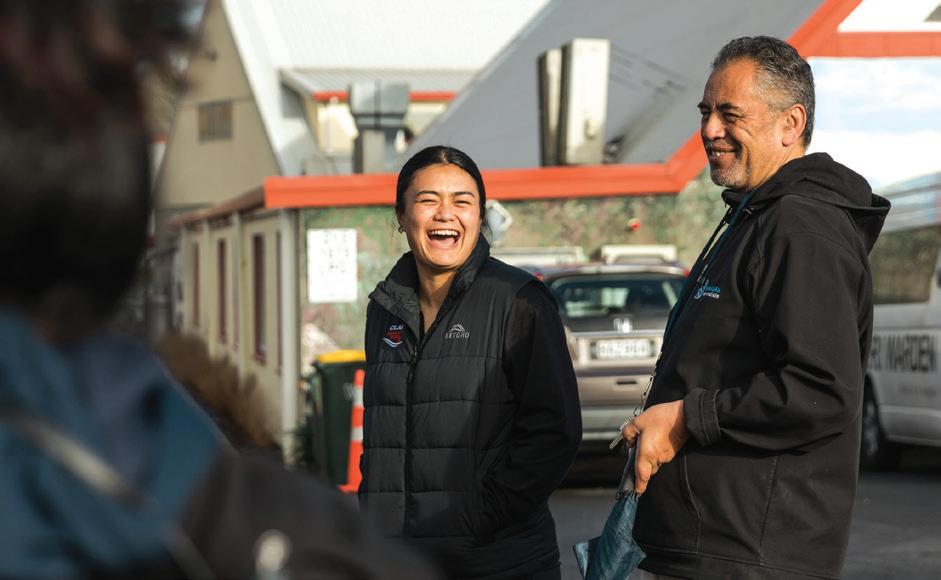
32 Education Gazette gazette.education.govt.nz
CLM Healthy Active Learning community connector Shyanne Thompson (left) says her role is to support schools in the area to create quality connections with their community to enhance tamariki wellbeing – and many had expressed a desire to deepen their relationship with Papakura Marae (top).
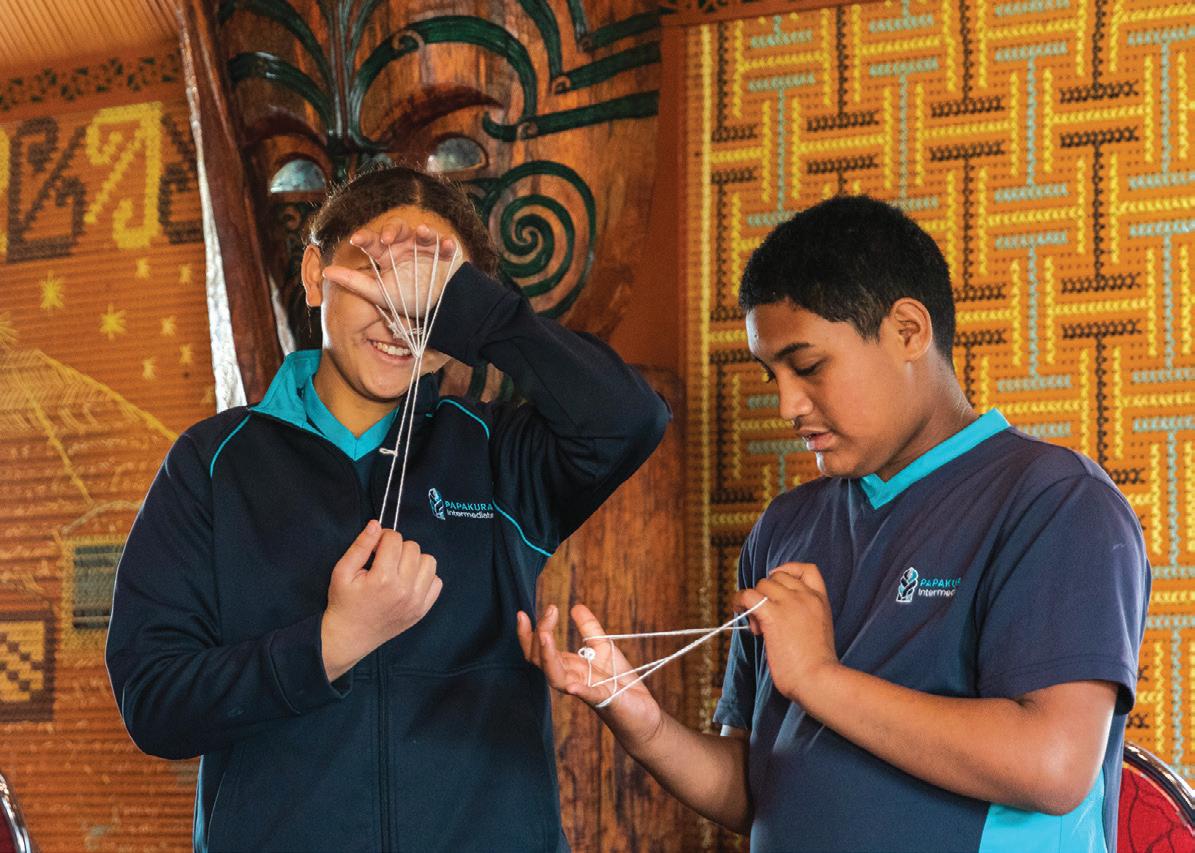
 Whai (string games) in the wharenui.
Kaleb (Ngāti Porou) (centre), says it had been cool to hang out with his friends and learn about Matariki on marae.
Whai (string games) in the wharenui.
Kaleb (Ngāti Porou) (centre), says it had been cool to hang out with his friends and learn about Matariki on marae.
Storybooks support mental health post-pandemic
Te Tāhuhu o te Mātauranga | The Ministry of Education has developed a series of storybooks to initiate conversations about mental health with tamariki aged 3–8 years, and in five languages to represent different cultures and identities.

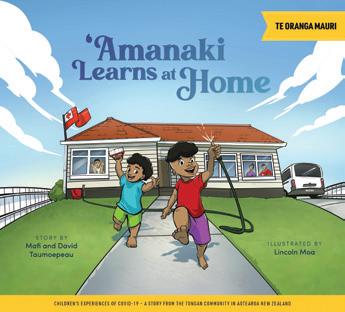
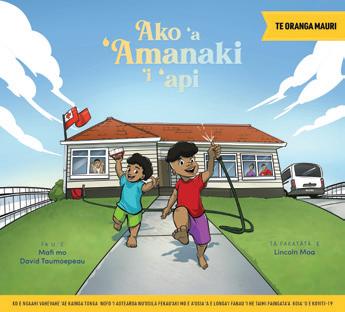
Te Oranga Mauri – Wellbeing Storybooks have been developed to provide kaiako and whānau with new resources to support the wellbeing of ākonga, using stories that address mental health issues caused by Covid-19 and its lockdowns. The storybooks are inspired by children’s real-life experiences.
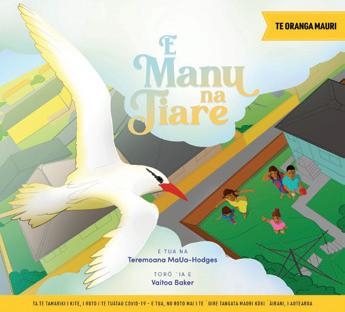
With young people experiencing higher levels of mental health struggles than ever before, many have returned to their places of learning after lockdowns with increased anxiety.
The books were developed as part of the 2020 Wellbeing Initiative which has a focus on providing ākonga with mental health and wellbeing education.
The series has been designed and developed for ākonga from early learning through to junior primary, which is unique among curriculum resources, covering a wide age group and aligning across multiple curricula.
The books have been developed for all children but have a particular focus on ensuring that Pacific and Māori children can see themselves in the stories; as well


34 Education Gazette gazette.education.govt.nz
MENTAL HEALTH
as providing relevant books to Māori medium and Pacific immersion units.
Te Oranga Mauri – Wellbeing Storybooks resource consists of five storybooks written in different languages:
» Te Whānau Aroha o Tipene (written in te reo Māori only)
» Sammy’s Koha (English and te reo Māori)
» ‘Amanaki Learns at Home | Ako ‘a ‘Amanaki ‘i ‘api (English and Lea Faka-Tonga, and in Lea Faka-Tonga)
» Kiara Loves White Sunday | E fiafia tele Kiara i le Lotu Tamaiti (English and Gagana Sāmoa, and in Gagana Sāmoa)
» A Kite for Tiare | E Manu Tiare (English and te reo Māori Kūki ‘Āirani, and in te reo Māori Kūki ‘Āirani).
Real-life experiences
The stories are based on children’s real-life experiences during the Covid-19 pandemic and lockdowns, with the authors coming from within their communities.
The stories are designed to support the mental wellbeing of children. They recognise that the Covid-19 lockdowns had a huge effect on children – especially tamariki in Auckland.
The purpose of the stories was to capture that moment in time, providing children who were affected by the pandemic with an opportunity to discuss the events of the past. They allow them to unpack emotions or thoughts which may not have been addressed at that time.
The work is informed by advice that the aftermath of the pandemic and lockdowns were still being felt by many families. The books are a tool to deal with those memories and to have those conversations that children and families might have just pushed down.
Support materials
Each book comes with teacher support materials that align across multiple curricula – Te Whāriki: He Whāriki mātauranga mō ngā mokopuna o Aotearoa, Te Marautanga o Aotearoa, and The New Zealand Curriculum – with adaptable curriculum content that is relevant for early childhood education through to Year 4.
There are activities such as drawing your family, discussing who they are and why they are important. In the language books, there is language enrichment.
The materials make it clear that those suggested activities are adaptable and that teachers can pick and choose what will work for them and with the group of children they are working with. For example, a Year 3 teacher might pick the material about drawing families and could expand on doing a more complex family tree, whereas an early learning kaiako teaching a group of four-year-olds could focus on drawing the immediate family, or maybe using drama or music to explore that concept.
Notes and support materials for whānau are included in the books, with story prompts and discussion tools that can be used at home, as well as helpful tips to support language learners to understand the meaning and pronunciation of different words.
Hard copy books will be distributed to all early learning services, schools, Māori and Pacific medium kura and units. The books are also being digitised with simple animations, New Zealand Sign Language and voiceovers in each respective language.
We know that when children and people have a strong sense of wellbeing, they can engage meaningfully in learning. National and international educational research tells us that learners who are safe, healthy, secure, and confident are the best set up to achieve in learning and in life.
35 Tukutuku Kōrero 18 September 2023
“The purpose of the stories was to capture that moment in time, providing children who were affected by the pandemic with an opportunity to discuss the events of the past. They allow them to unpack emotions or thoughts which may not have been addressed at that time.”
Ministry of Education
WELLBEING
Getting ‘In2’ wellbeing with holistic fitness programme
In Te Matau a Māui Hawke’s Bay, an in-school fitness programme is offering a compelling wellbeing experience for local tamariki.
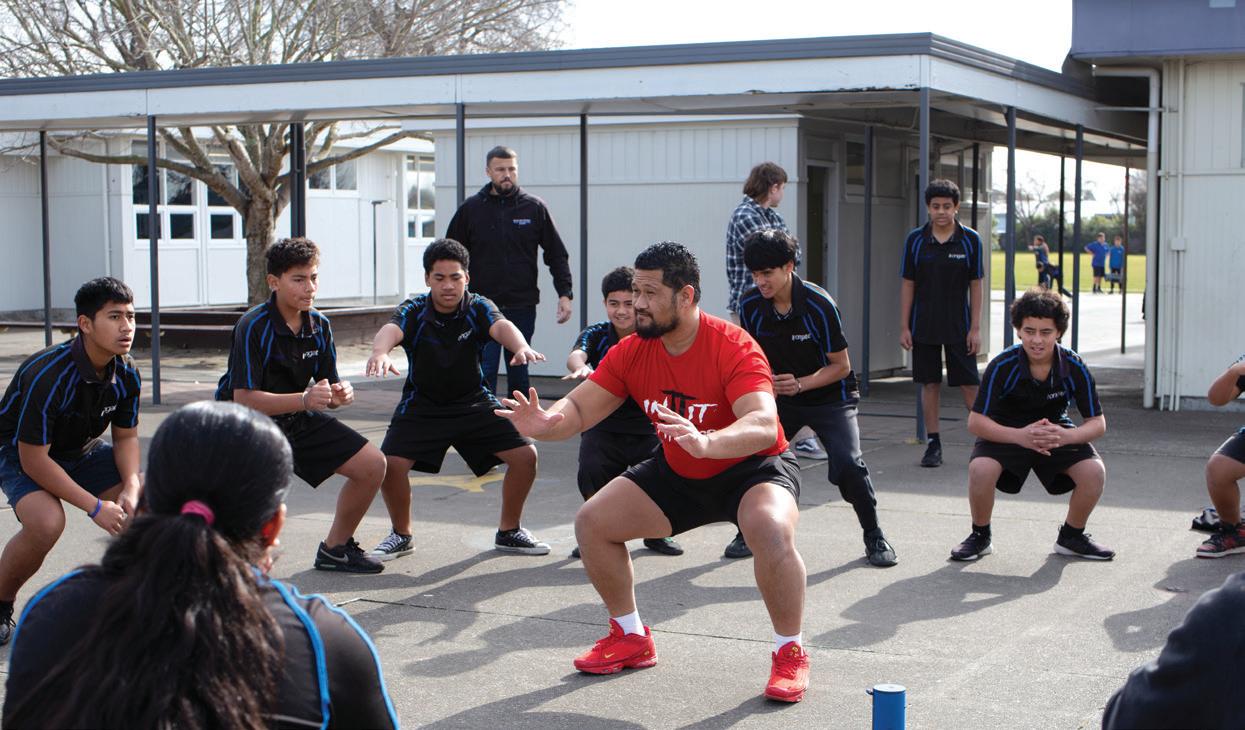
Afitness programme in Paharakeke Flaxmere began as a personal ambition for trainer Emeliano Fameitau, who says, “I became a personal trainer and found a lot of happiness. I felt like I needed to share that with others.”
He started offering free training to adults, dedicating extra hours beyond his role at a local gym. Bolstered by the acclaim of NZ Personal Trainer of the Year, and determined to find a new challenge, Emeliano partnered with his brother Maarateina.
“My brother is a youth worker and always had a dream to work in schools. With my background in personal training, I wanted to introduce fitness in schools, but didn’t have his level of experience working with young people.”
Together, they founded In2it Tamariki, an initiative that harnesses fitness as a cornerstone for holistic wellbeing and self-assurance among tamariki.
Fitness beyond exercise
At its core, In2it Tamariki is more than just fitness – it’s a holistic approach that nurtures physical health, mental resilience, character development, cultural empowerment, and self-esteem.
The programme’s kaupapa is described as four pillars – Leadership, Teamwork, Identity and Respect. These
are woven into every facet of In2it Tamariki, to offer a comprehensive experience beyond physical exercise.
Emeliano’s philosophy echoes this. “The fitness is not enough, there has to be more that we can put onto the plate so that ākonga get a full meal.”
From fitness routines to excursions, interactive engagement and moments of reflection, the programme aims to equip ākonga with valuable life skills as well as physical wellbeing.
After a successful pilot run with Flaxmere Primary School, In2it Tamariki is now offered at Irongate School and set to expand to all four primary schools in Flaxmere, with support from the Ministry of Education’s Pacific Education Support Fund.
“Primary school is the focus, to prepare students for secondary school and build habits that become a healthy lifestyle to take into adulthood,” says Emeliano.
In his view, consistency is a teacher, so the programme operates three times a week, with a different focus on each of those days.
Leadership and identity
It’s a Monday when Education Gazette visits Irongate School to observe the programme in action with senior students
36 Education Gazette gazette.education.govt.nz
PHYSICAL
Brothers Emeliano and Maarateina Fameitau, from In2it Tamariki, leading Irongate School senior students through a holistic fitness session focused on leadership and identity.
for a session focused on leadership and identity.
After karakia and waiata, ākonga form two lines facing each another. Stretching the whole length of the studio space, the room fills with laughter and banter as they start an energising drill using listening skills and cooperation.
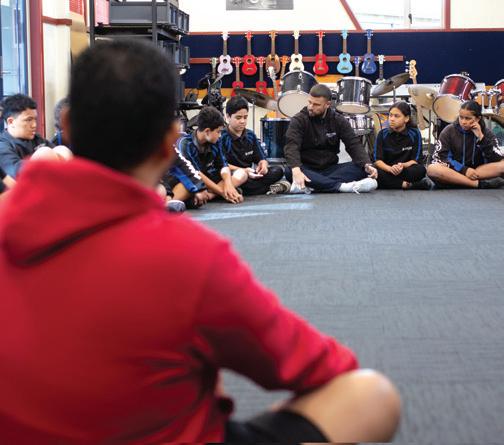
The group feels more cohesive as they end the drill and form a sharing circle. Each person – student, teacher, mentor and visitor alike – is asked to introduce themselves and invited to use their cultural structures and languages.
“They are given the opportunity to pass and in the first week, some students did, but as we build trust and they gain confidence, the number of ‘passes’ lowers. Today, there was noone who said ‘pass’,” beams Maarateina.
Following on from this, ākonga form teams to play a game where they identify Pacific nation flags before being led outdoors to complete the session with group exercises and a closing circle.
During the closing circle, they each share something they enjoyed, and something they’d like to work on. Journals are also offered for ākonga to share their thoughts and overall personal journey with In2it Tamariki.
Empowered voices
Flaxmere is a dynamic and expanding area. Officially a suburb of Hastings, it holds its own identity – one that is vibrant, distinctly Māori/Pasifika and reflected in its local primary schools.
Irongate School has a roll of 334 ākonga, 72 percent of whom identify as Māori and 24 percent as Pasifika (ERO 2018).
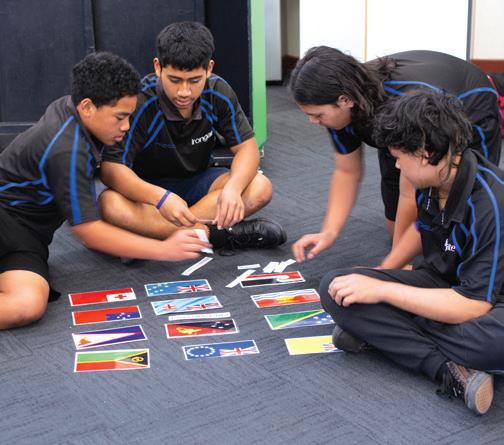
Similarly, for Flaxmere Primary School, 73 percent of their 451 ākonga identify as Māori and 22 percent as Pasifika (ERO 2019).
As a central component of their holistic wellbeing approach, In2it Tamariki supports ākonga to practise expressing their cultural identities.
“Just like how physical exercise builds muscle memory, this builds confidence in behaviour, so no matter where they are, they know how to introduce themselves,” explains Emeliano.
Students develop a sense of appreciation, not only for their own cultural identities and values, but that of their peers as well.
Year 6 Flaxmere student Kerry remarks, “Sharing about our cultures made me feel proud.” A key learning for classmate Sailimalo is “to respect other cultures and see what they do.” For Riven, “trying to learn my culture feels different now, I feel confident.”
The overall impact of In2it Tamariki on the wellbeing of its participants is profound. Year 8 Irongate student Neilson shares, “I feel more confident after doing this,” while classmate Kathy notes, “I feel more confident talking and I like to push myself with fitness.”
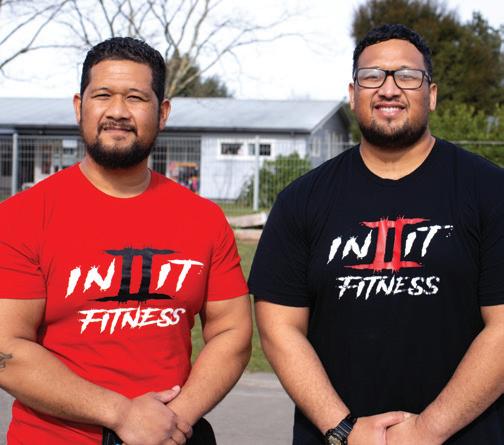
37 Tukutuku Kōrero 18 September 2023
“Just like how physical exercise builds muscle memory, this builds confidence in behaviour, so no matter where they are, they know how to introduce themselves.”
Emeliano Fameitau
Emeliano and Maarateina Fameitau.
Irongate School students play a game with Pacific nation flags.
The session finished with a closing circle.
These sentiments are echoed by Year 8 classmate Sylvester who finds that the programme boosts his confidence to speak in front of others and to listen while others speak, an essential skill for his transition to high school.
Exploring the uncharted
In2it Tamariki opens the door to experiences that ākonga might not have encountered otherwise. From excursions to local basketball courts and community centres, to engaging in martial arts or learning to play pickleball, the programme sparks curiosity to broaden horizons.
“One, two, three!” calls Emeliano. “Respect!” comes the unified response from Flaxmere Primary’s Year 6 students.
They are about to enter the Hawke’s Bay ITF Taekwon-do facilities where instructor Ben Evans introduces them to a squad of world champions, all tamariki like them, some from Flaxmere.
The squad demonstrates their medal-winning sequences and block-breaking techniques before taking ākonga through a typical warm up routine.
Ben motivates the group, affirming that “If you want to be a champion, you have to train like a champion. That’s what made this squad who they are today.”
At the end of the visit, the energy in the students has shifted palpably; they are chatty and bright but also physically settled and aware.
Because wellbeing comes in many forms, these excursions also serve as opportunities to cater for diverse learning styles and abilities among students.
“If we provide a variety of experiences, then there is something for everyone to find. The only rule is that they
have to give one hundred percent, whatever their one hundred percent is,” says Emeliano.
Considerations of diverse abilities and learning styles come naturally to Emeliano and Maarateina who both have extensive personal experience with neurodiverse tamariki.
One student who Emeliano mentions as an example, can find it difficult to participate in large groups, “but last week at karate even though there were people around, he was right there giving it a go, because he found some value in the activity and the pace was just right for him.”

Mentors as catalysts
For any programme, mentors are at the centre of its success. Emeliano and Maarateina are fitness guides and also role models who embody the values they teach.
Raised in Flaxmere themselves, they have built into the programme, all of the support and experiences they wish they’d had as students.
Maarateina shares, “The look on some of the students’ faces when they walk in and see another brown face, we can tell that they’re already comfortable.”
Ākonga also recognise Emeliano and Maarateina as mentors who lead by example.
“Good leaders show respect, they respect us,” one participant affirms.
“They motivate me to keep going, they push us but they’re not strict,” says another.
Kaiako too, see value in the Fameitau brothers’ approach.
“They are not just teaching sports, but fitness and confidence. It fits well with our school goals and they relate to ākonga – they’re local and visible in the community,” comments Natalia Drummond, kaiako at Irongate School.
“They are not just teaching sports, but fitness and confidence. It fits well with our school goals and they relate to ākonga –they’re local and visible in the community.”
Natalia Drummond
Flaxmere Primary School students at Hawke’s Bay ITF Taekwon-do with instructor Ben Evans (on the right).
Day by day, into the future
The Fameitau brothers are determined to offer ākonga not only strength, but tools to navigate life’s challenges.
Their dedication to tamariki in their home town has made In2it Tamariki a remarkable example of wellbeing centred in growth and empowerment. Beyond physical fitness, the programme enables a comprehensive journey for ākonga by prioritising mental resilience, cultural pride, and interpersonal skills.
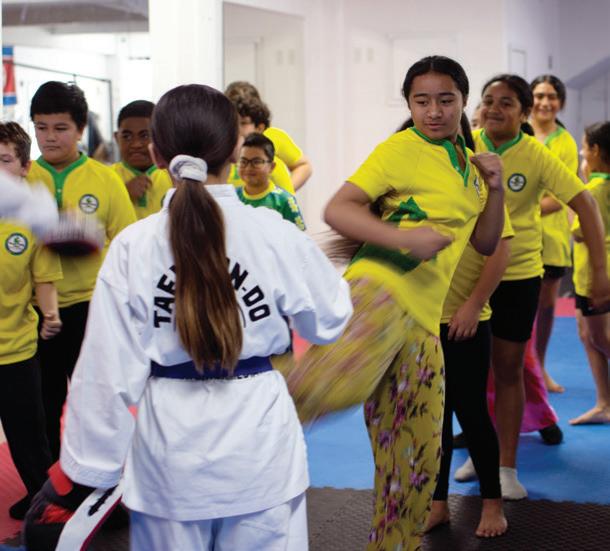
From the pillars of Leadership, Teamwork, Identity, and Respect to the eye-opening excursions, the impact of In2it Tamariki resonates far beyond fitness.
Perhaps Emeliano says it best when he asserts, “Investing in these students makes a better future. When they come out [of the session] smiling and laughing, that’s a payout, that’s a win!
“When they go to sleep at night, they can wake up knowing that because they had a good day yesterday, they can have another good day today.”
In2it Tamariki illuminates the potential of Flaxmere’s tamariki, with optimism in their communities to foster a generation of confident learners who embrace challenges as stepping-stones to their aspirations – day by day, into the future.
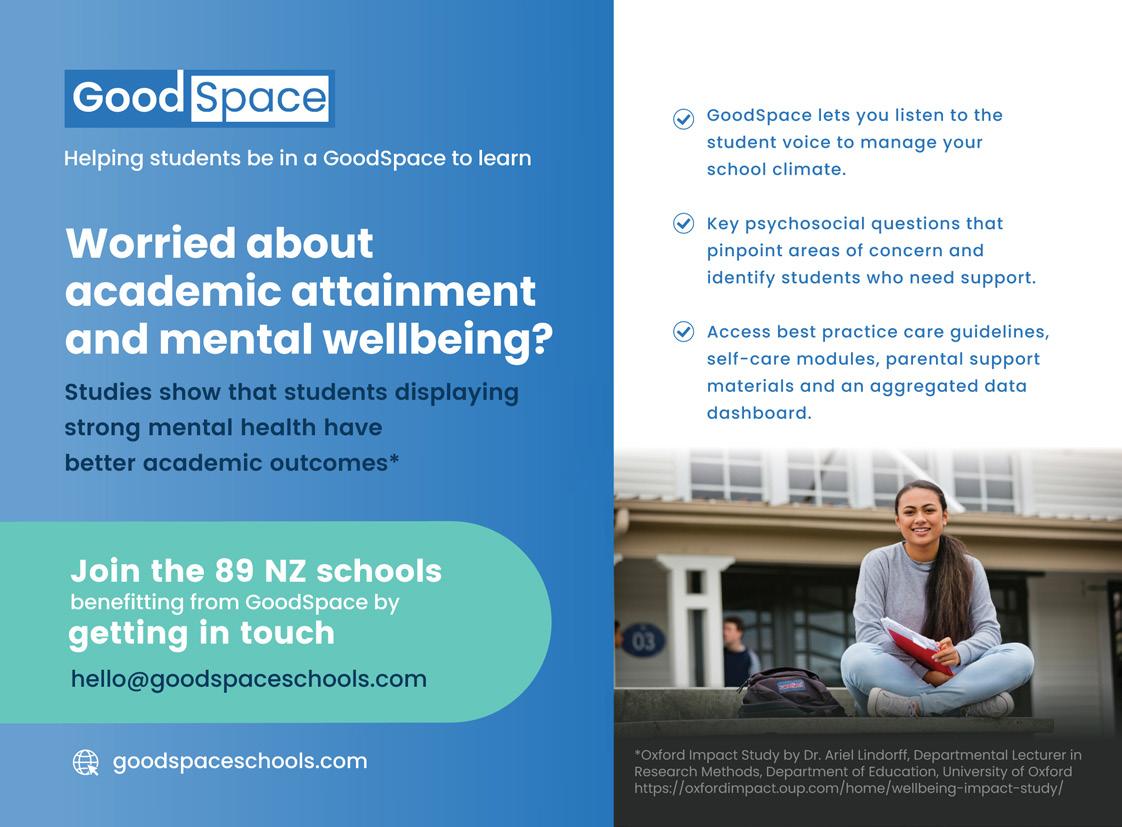
39 Tukutuku Kōrero 18 September 2023
Flaxmere Primary students take on Ben's advice: “If you want to be a champion, you have to train like a champion."
Culturally sustaining hauora programmes

Mana Ake works with Waitaha (Canterbury) kura, providing children in Years 1–8 support in their mental health and wellbeing. As part of the wider programme, two specific cultural initiatives have been developed: Building Pasifika Fanau and Ko Wai Au, working with Pacific and Māori tamariki.
Further reading
In Mental health support for West Coast communities, read more about how the launch of Tai Poutini Mana Ake on the South Island’s West Coast is bringing students and communities closer to mental health support and services in even the most remote parts of the region. Visit gazette. education.govt.nz.
For more information about Mana Ake, visit manaake.health.nz.
Building Pasifika Fanau and Ko Wai Au were developed out of a belief that one’s health and wellness is linked to one’s culture. Our culture frames how we see the world and ourselves.
The two initiatives provide practical skills to connect ākonga with their culture, as well as tools for mindfulness and resilience and reflective practices: “Mana resulting from strength of character”.
Mana Ake kaimahi in Waitaha are employed by one of 12 NGO providers including kaiako, youth workers, counsellors and psychologists.
Building Pasifika Fanau
The Building Pasifika Fanau initiative provides Pacific tamariki with cultural tools to understand and improve
their mental health and wellbeing and work on creating a positive self-identity.
The Building Pasifika Fanau group was built by Pacific kaimahi, in correspondence with their local community. The only criterion to be in the group is that you are Pacific people.
As of July 2022, there were just under 5,000 Pacific ākonga attending Canterbury kura out of 98,000 ākonga.
Canterbury social worker Sina Latu helps to facilitate Building Pasifika Fanau.
Within the initiative, kaimahi can do one on one work with ākonga, group support, school and kaiako guidance, and provide advice to parents too.
“There are many pockets of work you can do and over time we’ve allowed flexibility for how the programme can work,” says Sina.
40 Education Gazette gazette.education.govt.nz
IDENTITY
CULTURAL
Faleata ualesi art created by Westburn School during a Building Pasifika Fanau group session.
“For us Pacific kaimahi, we saw that there was a gap and there wasn’t anything for Pacific ākonga and fanau.
“We then had to voice this and do a lot of advocating for ourselves to create the group and then do the work to get where we are now.”
Sina says the aim is to build confidence, self-esteem, pride and to enable ākonga to feel like they have a space within their kura that is dedicated to themselves and to create that connection between one another and their cultural identity.
The Building Pasifika Fanau groups started officially in July 2020. They work following school terms, with five groups each term and 7–15 children in each group with six sessions a term.
“We’ve been working with at least 50 ākonga per term since the initiatives began.”
At the beginning of each session, the group will start by doing a karakia and then check-ins on how everyone is feeling. The session ends with another karakia, a reflection on the day and a chat about what everyone is looking forward to.
The sessions change depending on the age group, with flexibility in the programme.
“For our seniors, we build in a lot of Pacific language, like introductions, and then we introduce a phrase of the day which we incorporate throughout the session,” says Sina.
“A lot of kaiako will incorporate snappy words to bring everyone together, like mili mili patia too.”
Nurturing the vā
As the sessions continue, they teach the concept of ‘Vā’, which for Pacific people is to respect and maintain the sacred space, harmony, and balance within relationships. Ākonga learn about personal values and how everyone is interconnected. At the end, a group treaty is created.
One tool used is a Sāmoan framework called the Fonofale Model. This model is made up of five dimensions of life that are interdependent and complementary to each other. In order to have harmony and balance, health issues should be addressed at all dimensions.
Each session has a different theme, from identity, emotions, and language, to island cooking or Pacific art and games.
Ākonga participating in the programme from Westburn School in Christchurch say they have loved learning about their culture, especially the dawn raids, a time many ākonga did not know about previously.
One ākonga says learning about the dawn raids connected her with her family as she learned her grandfather had to change his name to an English one to avoid police persecution.
Sina says they hope to one day expand their work into the wider community.
“For Pacific people and mental health and wellbeing, we have a big emphasis on knowing who you are and where you come from and I think for those that come out of the islands, or are some generations ahead, the distance to the connection can feel quite far,” says Sina.
“When ākonga spend six hours at school and have nothing Pacific based or that looks or speaks like them, it can be quite hard.”
The Building Pasifika Fanau initiative works hard to provide this representation to ākonga.
“Building Pasifika was an inspiration to keep our culture going and to be proud of who we are. Don’t let anyone put you down, everyone should be themselves and stay that way,” says a Westburn School ākonga.
Ko Wai Au
The Ko Wai Au initiative works to provide the 15,000 Māori ākonga in Waitaha primary kura with a sense of their own cultural identity.
The name of the initiative translates to “Who Am I?” and it encourages ākonga Māori to investigate their personal and cultural values. This fosters a strong sense of identity which in turn helps to provide ākonga with the tools to support their personal wellbeing journey.
The programme is about seven weeks long, with a weekly 45-minute session in a small group setting.
Purapura Whetu is a kaupapa Māori provider hosting the majority of kaimahi Māori who run the Ko Wai Au initiative.
A big part of Ko Wai Au is engaging ākonga in handson activities. For example, tamariki learn how to weave harakeke and carve into wood and bone. Those activities stand out to ākonga as for many it is a completely new experience for them.
Akonga also learn their mihimihi and pepeha and are encouraged to share this at home.
Māori kaupapa and kawa are explored through mau rākau underpinned by the principles of Te Whare Tapa Whā.
Māori ākonga from Parkview Pārua School take part in the weekly initiative, connecting with their culture, making new connections with their whānau and community.
41 Tukutuku Kōrero 18 September 2023
“For Pacific people and mental health and wellbeing, we have a big emphasis on knowing who you are and where you come from. I think for those from the Pacific, or are some generations ahead, the distance to the connection can feel quite far.”
Sina Latu
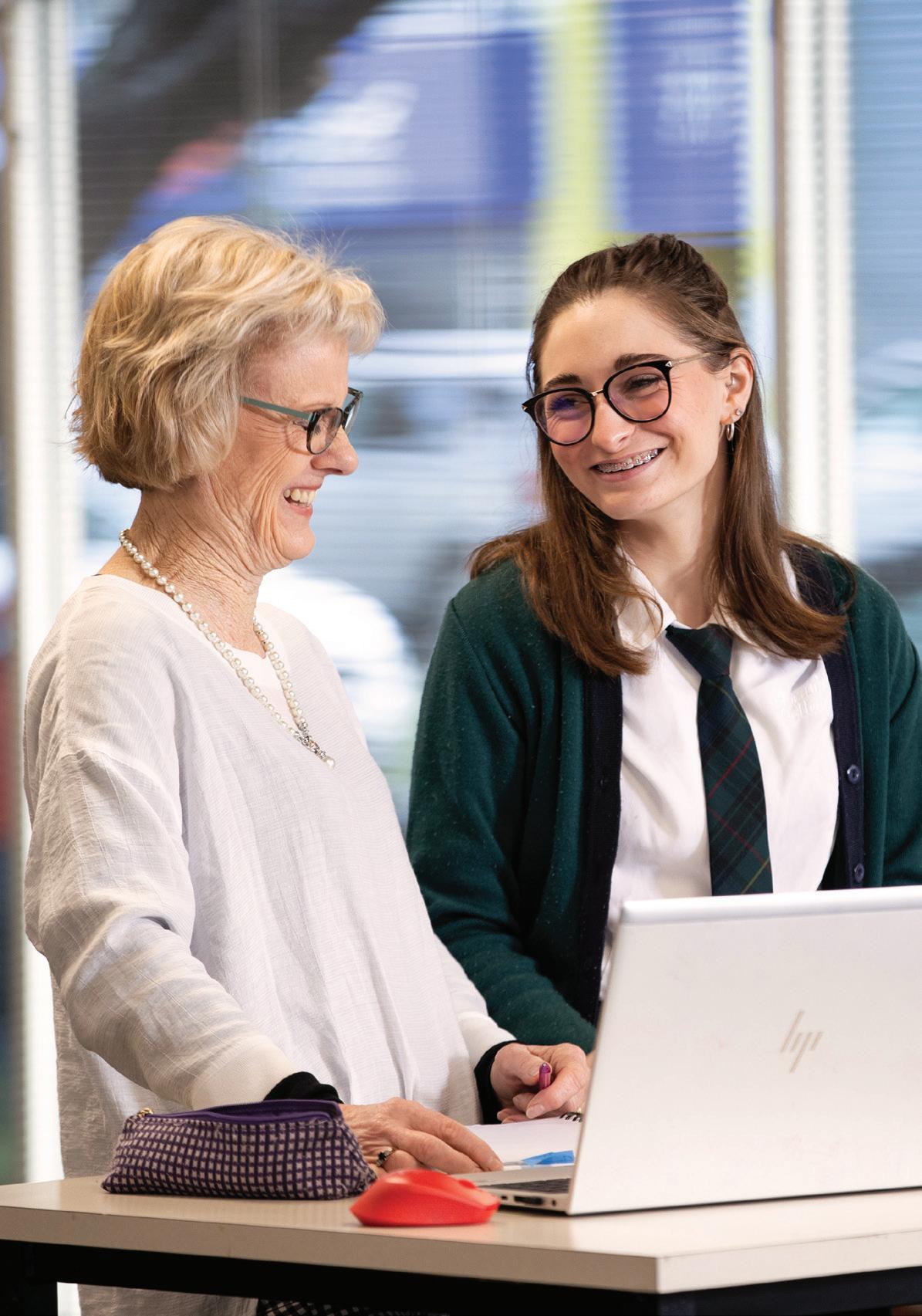 Health School teacher Sherril Palmer has supported Sophia since she became unwell in 2020.
Health School teacher Sherril Palmer has supported Sophia since she became unwell in 2020.
Supporting ākonga with high health needs
At any one time, throughout Aotearoa, the education of around 2,000 ākonga with high health needs is being provided by around 400 teachers working out of three regional Health Schools.
The Health Schools – Northern, Central Regional and Southern – offer support and a variety of options to students with physical or mental health needs throughout Aotearoa. They were established in 2000 when they mainly operated out of hospitals.
“Each school has grown organically since then and does things a bit differently, but the brief is the same – we are here to cater for students who are unable to attend mainstream schooling because of their health conditions.
“When the schools were established, that was approximately due to 80 percent physical conditions, or illness, whereas that has pretty much flipped and it’s now around 80 percent mental health,” says Jason White, Tumuaki | Principal of the Central Regional Health School.
Grueling journey
In 2020, when she was in Year 9, Sophia (now 16) became sick, resulting in an eight-week stay in Hutt Hospital. She was diagnosed with POTS (Postural Orthostatic Tachycardia Syndrome) – a disorder of the autonomic nervous system which regulates functions the body doesn’t consciously control such as heart rate, blood pressure and body temperature.
“She loved school, was bright, very sporty, had lots of friends and was involved with a lot of activities, so it was devastating really,” says Sophia’s mother, Debbie Turner.
Debbie says that without the support of the Central Regional Health School, she doesn’t believe that Sophia would have been able to return to school and achieve 50 NCEA Level 1 credits in 2022 and aim to pass NCEA Level 2 this year.
Sophia also developed a chronic pain condition,
became bed-ridden and lost the ability to walk and to eat. The condition resulted in multiple visits to Starship Hospital and the Wilson Centre, a North Shore rehabilitation centre – totaling about 17 weeks away from home in Auckland.
Invaluable support
Debbie, can’t speak highly enough of Health School teacher, Sherril Palmer.
“We first met her in Hutt Hospital where she came to see if Sophia was well enough to do a little bit of schoolwork. At that point, she wasn’t well enough to do schoolwork, but even just talking about school and alleviating the concerns around it helped. We were thinking, we’re missing so much school, what happens here?
“Being able to allay those concerns and reprioritise and refocus where the learning needs to be was really invaluable in those first few weeks,” says Debbie.
Sophia has been supported by Sherril since then, with the Northern Health School providing support during stays in Auckland.
Support and advocacy
Debbie says that Sherril’s support continues to be invaluable.
“Sophia got back to school part-time last year. The amazing thing was working with Sherril and just realigning our goals. Our goal last year was not to achieve Level 1 as that’s a very big goal and we need to attack things in bite-sized pieces; our aim was to try to get back to school 80 percent by the end of the year.
“The big thing was our review meetings with Sherril
43 Tukutuku Kōrero 18 September 2023
INCLUSION
“Most of these students would have fallen by the wayside otherwise. That’s the joy of the job –keeping opportunities open for young people.”
Ann MacGregor
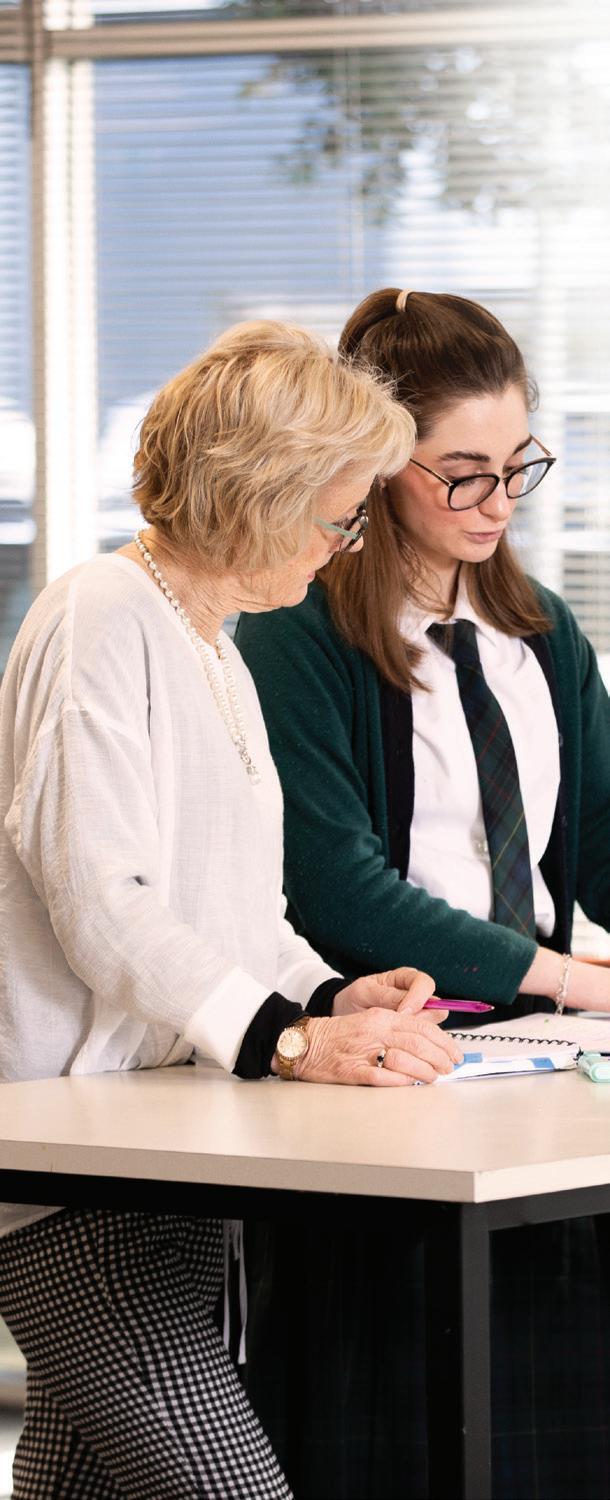
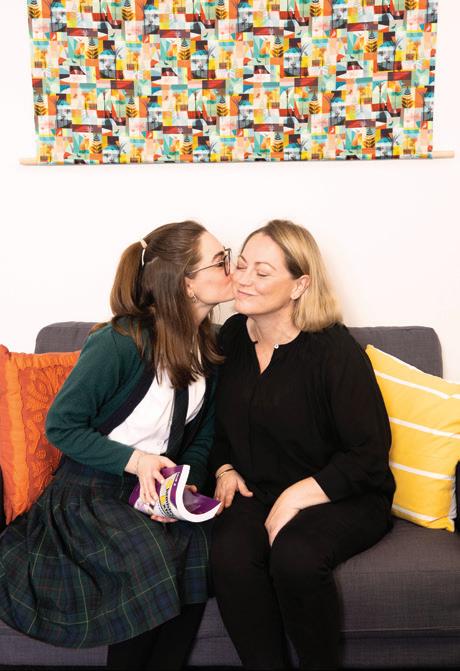
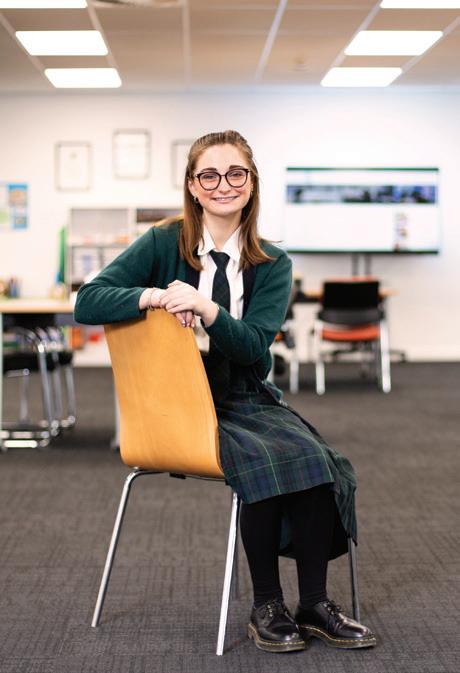
44 Education Gazette gazette.education.govt.nz
Top left: Sophia’s mother Debbie (right) says support from the Health School has helped the family to cope.
Bottom left: Support from the Central Regional Health School has helped Sophia to continue her education.
Right: Sherril and Sophia at the new Health School facility in Lower Hutt.
and the deans at Sophia’s school: just realigning expectations and reminding them that just because she got to school for one week, doesn’t mean she will get to school the next week. Also understanding that stress is a big factor and making sure that teachers communicate with her in the right way and don’t forget that she’s sick and put the pressure on, because then we become derailed,” says Debbie.
With Debbie’s energy going into supporting Sophia and her family, she was grateful when Sherril ensured that Sophia’s wellbeing was provided for at school. This has included asking the school to provide a space where Sophia can rest when she becomes exhausted and explaining that she needs to wear additional nonuniform clothes at times as her body doesn’t regulate its temperature.
“Sherril has helped us explain to school that she will need to wear non-regulation clothes to try and keep warm. She has advocated for us, and it means I’m not coming across as a precious parent.
“Without the Health School support, I don’t know that I would have got her back to school last year. I don’t think I had enough in my tank to drive that. Without their support, it might have been in the too hard basket. But it was invaluable to have someone there to navigate and guide, be our voice and advocate, and also to work at a pace that was accessible and doable for her,” says Debbie.
Future goals
While POTS still dominates Sophia’s life, things are getting back to normal.
“She is determined to get Level 2 NCEA and she’s working with Sherril on that. The timetable didn’t work for the subjects she wanted to do, so Sherril managed to organise one paper through Te Kura, which means she only has to do four subjects at school. She might start school later, finish earlier, or work with Sherril for a couple of hours. It just means there’s not the pressure to do five subjects at school every week.
“She wants to be a paediatric nurse. She wants to travel. She wants to get back to as normal a life as possible: have a career, have a family. She has normal aspirations, it just takes us longer,” says Debbie.
“Without the tremendous help of Sherril and the CRHS I have no idea where I would be now. Health School advocated for me when I couldn’t and has now given me the tools to advocate for myself. I will forever be eternally grateful for their help not only in my transition back to school and my recovery but for building my selfconfidence and making me believe in myself,” adds Sophia.
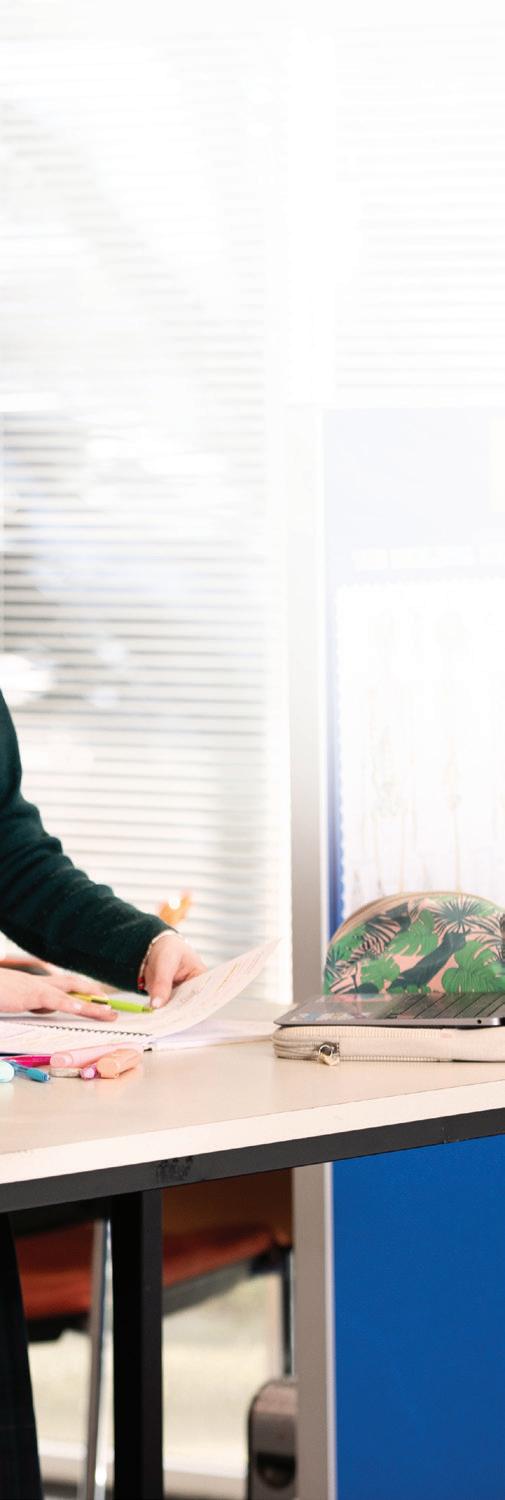
45 Tukutuku Kōrero 18 September 2023
Read this article online for an insight into a week in the life of a Health School kaiako. Visit gazette.education.govt.nz or scan the QR code.
“Health School advocated for me when I couldn’t and has now given me the tools to advocate for myself. I will forever be eternally grateful for their help not only in my transition back to school and my recovery but for building my selfconfidence and making me believe in myself.”
Sophia Turner
Transition-focused kaupapa
The Health Schools are focused on transition back to school, unless a student is over 16 and has no plans to return to school. Each student has between two and three hours each week with a Health School teacher. The schools work alongside a team which can include a student’s school, whānau, health professionals and agencies such as Child Adolescent Mental Health Service (CAMHS).
“For students to be admitted to our school, there needs to be a referral from a specialist and an active treatment plan in place that we work alongside with the idea that when they’re back on their feet, we transition them back, either into the school they came from, or whatever their next step is whether it’s going to tertiary study, or work. We’re not intended to be a permanent solution for a student,” explains Jason White, Tumuaki | Principal of the Central Regional Health School.
Problem-solving and relationships
Flexibility and problem-solving are important skills for the teachers, who generally have around 10 students they are responsible for, which may include cancer patients, students with significant medical concerns and students with mental health issues.
“A student going through chemotherapy, for example, may have a period when their immune system is impacted, they can’t go back to school and that’s where our teachers can really help with maintaining education at home. The treatment plan they are going through is the medical process to become physically well again – that’s a simple one. Supporting students in the mental health space is more complex because there are no timeframes that we can predict, and the treatment plans themselves need to be quite agile.
“The waiting lists are heartbreaking. A student is being told to put their mental health crisis on hold for eight months until they can see a specialist. Unfortunately, we’ll get a situation where a referral will come through and the student hasn’t been involved in education for over a year. Just getting alongside them, building the relationship and getting them engaged is a significant first step,” says Jason.
Challenging and satisfying
While the work is different and challenging, it can be an appealing career option and many Health School teachers have been on the job for a long time. A typical week includes travel, attending multi-agency meetings and teaching and supporting students with complex needs.
“We’ve got nine units around the [central] region that cater for students in the community health strand of the school. Our ideal is that we work with students at their own school where possible. If that’s not possible, then we work with students at one of our sites and if that’s not possible, we go to the home. For some of our students with mental health conditions, in particular, actually getting them out of the house and into our site is a great step towards transition back to school, so we don’t like to teach in the home unless we have to.
“Each of our sites are quite different, but in general, there’s a nice open classroom space where each of the students comes in and works one on one with their teacher. Some of our sites have study programmes and activities that students can opt into and access. But in general, they get their two hours face to face contact time with their teacher, as well as work done independently outside of that, which the teacher manages,” says Jason.
Jason says it’s important that Health School staff have access to a network of supervisors and counsellors and while there’s a limit of six sessions per year, he will approve more if it’s required.
“There’s a risk of secondary trauma. Given the work our staff do, I think it’s really important they can access this. Our teachers work through quite a lot with students and sometimes they are still working with students as they are going through palliative care – that is the unfortunate reality of this job as well.”
Nationwide service
Central Regional Health School covers Wellington through to Hawke’s Bay and Whanganui; Northern Health School covers the top half of the North Island and Southern Health School provides a service for the South Island.
» Northern Health School: nhs.school.nz
» Central Regional Health School: crhs.school.nz
» Southern Health School: srhs.school.nz
$2,500
Funding of up to can be awarded to a student or up to $5,000 to a group of students
Awards for Gifted Learners
Are you teaching any gifted learners?
Encourage them to apply for the Awards for Gifted Learners to support their learning and pursue their passion.
Gifted learners in early learning up to school leaving age can apply for these awards. Parents or teachers can also apply on behalf of learners.
Applications for 2023 open on 1 September and close on 9 October.
For more information, visit: https://gifted.tki.org.nz/ further-support/awards/
or scan the QR code:
For queries, email: gifted.enquiries@education.govt.nz
Gamifying nutrition helps ākonga make healthier choices
Vegetables that turn into superheroes and time travel feature in a video game being used to teach tamariki about nutrition.
Primary school students aged 7–11 are invited to enter this fictional world to help the future citizens and learn about nutrition during an online game adventure. It’s the year 2080 and all food is artificial and lacks nutrition.
Two Otago academics took their passion to help children be happy and healthy into the business realm when they established the Nutriblocks EdTech startup in 2020.

Dr Claudia Leong, who has a PhD in human nutrition, teamed up with University of Otago computer science lecturer Dr Veronica Liesaputra. They were motivated to
make nutrition education more accessible.
“We know that having more fruits and vegetables in the diet is helpful and beneficial for children’s health, but how do we get children to eat more fruits and vegetables?”
Claudia says.
“I’ve experienced that playing video games can change behaviour, so I was thinking, how can we use video games to promote positive behaviour?”
There were games to promote physical activity, maths and science on the market, while nutrition education games overseas were linked with copyrighted brands, she observed.
48 Education Gazette gazette.education.govt.nz
NUTRITION
Students Léala and Phoebe play the Nutri-islands game.
“I thought it would be nice to make something for New Zealand children. We want the children to be constantly reminded to talk about nutrition and talk about their health,” says Claudia.
Co-design
The free Nutri-islands game was developed with funding support from the New Zealand Centre of Digital Excellence.
The co-design approach involved focus groups, playtesting, and pilot tests with schools in Dunedin and Christchurch to ensure that the game is both fun and educational.
In 2022 Tuia Burnside Primary School was involved in the pilot. Then the designers took the students’ feedback on board for updates before the game was launched this year.
Bianca Woyak teaches science in Years 1–6 and her teaching includes the Garden to Table programme, where students learn how to grow, harvest, cook and eat vegetables.
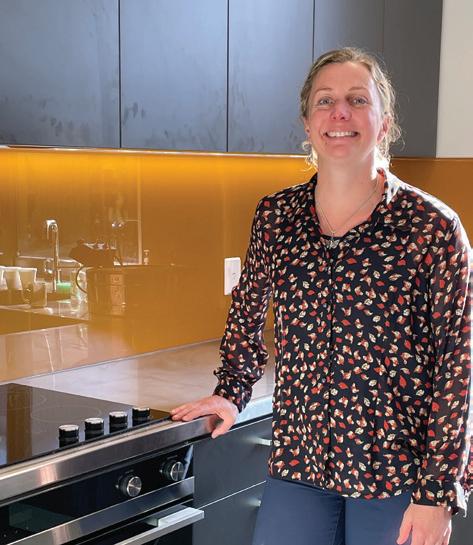
While half of the class group is cooking healthy food for one of these science sessions, the other half plays Nutriislands. The students then swap what they are doing and finish up eating their food together. This supports ākonga to learn about the nutrition people require for growth and development, while gaining the skills needed to prepare food successfully and safely.
The players help Ote, the game’s protagonist, to improve the health of his whānau by learning and choosing the correct healthy food items for a given task.
“You need to collect things from the sparkling platforms – the foods. The iron, the protein and all those things that you need in the body. It’s a fun way of learning,” says Year 5 student Phoebe.
“There are coins you get, and you can buy clothes from the store and accessories so you can put them on the characters,” she says.
Year 6 student Léala rates Nutri-islands as the “funnest” video game at school.
“I think the people who created this just somehow put the learning in a fun way. It’s kind of cute as the professor turns into a dog,” she says.
Phoebe learnt that carrots are full of Vitamin A. But does that help you see in the dark?
“It can help you improve your vision but only to a limit, of course. It doesn’t keep growing and growing and growing like superhero powers!”
Phoebe shared a fun fact: 10 packs of oranges a day equals orange skin!
Nutrition at home
At the end of each level, players answer a question correctly to advance progress.
Before playing the game, Léata and Phoebe said they understood an average amount about their food, particularly about whether it was healthy or not healthy.
Now they say they are talking about food more at home and discussing healthy menu choices with their parents.
Parents have been in touch to marvel that their child actually ate zucchini, or to request a recipe, says Bianca.
Te reo Māori and educational video material is also woven into the game, which includes lesson plans for teachers. Take a look at nutriblocks.co.nz.
“At school you don’t really want students to have any more screen time than they currently have. But with Nutri-islands I can have half the class self-managing and engaged on a computer game learning about what we’re doing,” says Bianca.
By this age the students know that it is important to eat their vegetables and fruit and to moderate eating too much of one thing, but they don’t know why, she says.
“It’s good to provide them with the ‘why’ and this game helps as a cool tool to do that,” she says.
A cool tool
Each player has their own login, and the game saves their progress each time.
The topics are Vitamin A, Vitamin C, Iron, Protein, Carbohydrates and Fat.
“I find it a helpful tool. We’re doing the health and the science learning. The game is just another tool that we can use, especially in winter when sometimes you can’t get out to the garden,” says Bianca.
49 Tukutuku Kōrero 18 September 2023
“I’ve experienced that playing video games can change behaviour ... So how can we use video games to promote positive behaviour?”
Claudia Leong
Tuia Burnside Primary School teacher Bianca Woyak.
RESOURCES
Channelling youth wellbeing on SchoolTV
SchoolTV is a New Zealand-Australian initiative – a consolidated, expertbacked, digital platform for parents and whānau covering a broad range of mental health and wellness issues affecting secondary school students.
What if every time a parent said to a teacher, ‘my son’s being bullied’ or ‘my daughter refuses to go to school and she used to love school,’ the teacher could point worried whānau to the TV?
Not just any TV, but SchoolTV, hosted on a school website featuring a team of well-known experts covering everything from neurodivergence and cultural inclusion to the impact of social media influencers and how to support children around self-harm.
SchoolTV covers mental health and wellness issues affecting school students and their families in long form videos, clips, and a range of resources.
Featuring well-known faces like Nigel Latta and Dr Melinda Webber alongside New Zealand and Australian psychologists, doctors, academics, practitioners and experts, the platform is a powerful pastoral tool, explains NZ sales manager Helen McFarlane.
“A few years back founders James Wilson and Rob Leishman were at a school event where renowned child and adolescent psychologist Dr Michael Carr-Gregg was
talking. They said to each other, imagine if all schools had this privilege to have access to all the professionals in their fields talking about what is best for our students and how to help our school communities.”
From this kernel SchoolTV was born, a platform providing schools with easy access to expert insights.
“The idea was to amplify the voices of professionals dedicated to children’s wellbeing,” says Helen.
The website has now been installed in almost 100 schools across Aotearoa New Zealand.
“Schools are increasingly dealing with social and mental health issues; the need for a regulated and trusted resource that supports and connects parents, teachers and whānau has become a necessity,” she says.
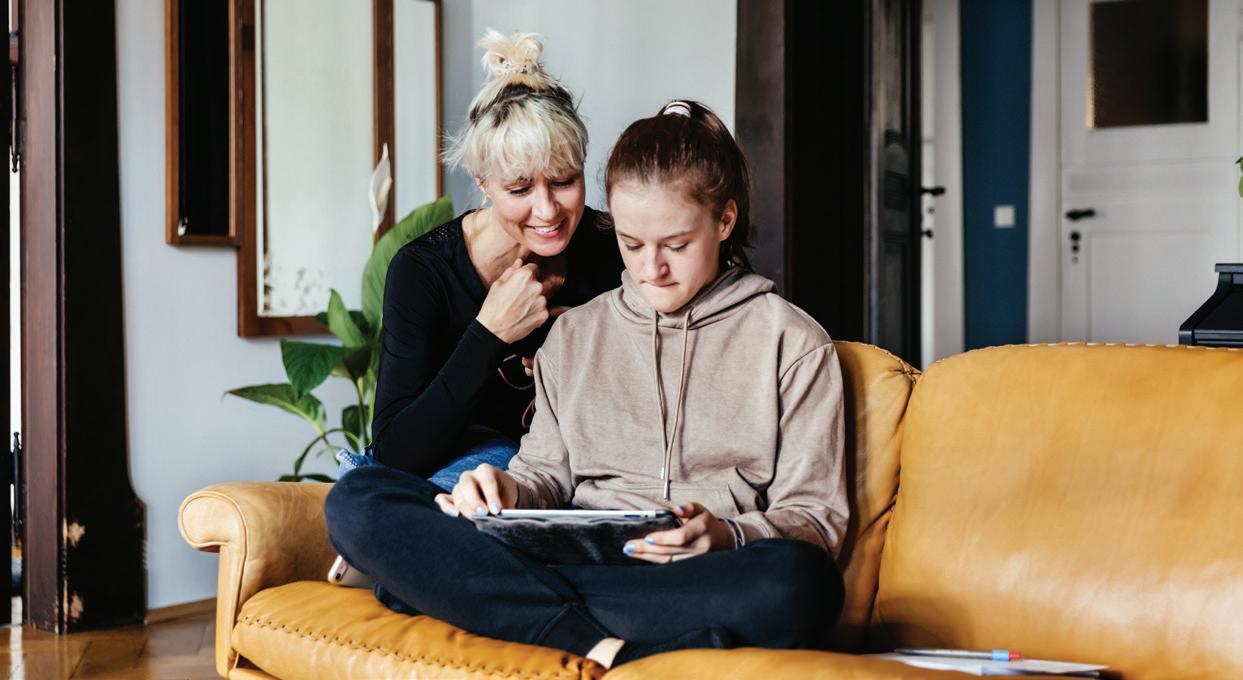
Recently, Helen was in Victoria, Australia, helping support 12 schools coping with a tragedy involving five students from the community.
“They reached out because they said, ‘We need support for our parents and our communities, and we just don’t know where to go’.”
50 Education Gazette gazette.education.govt.nz
SchoolTV, in partnership with schools, supports parents with access to easy-to-understand information to better connect with their children.
Empowering parents
SchoolTV means all parents can have access to easy-tounderstand information, empowering parents to better understand and connect with their children, explains Helen.
“Dr Carr-Gregg explains that parents looking for help online or out in the world can find information that is often confusing and could be fragmented and overwhelming. Parents are information saturated but still knowledge poor.
“It honours that when schools and families partner across wellbeing it has a huge impact on children’s outcomes. It strengthens the school-family partnership and builds new levels of trust and engagement.”
New Zealand psychologist Dr Emma Woodward coordinates the SchoolTV hub of experts from the NZ end, and specialises in a trauma-informed approach, says Helen.
“Experts in their fields are now approaching SchoolTV to be a part of it. They realise the importance of supporting school communities with palpable, intelligent and professional information.”
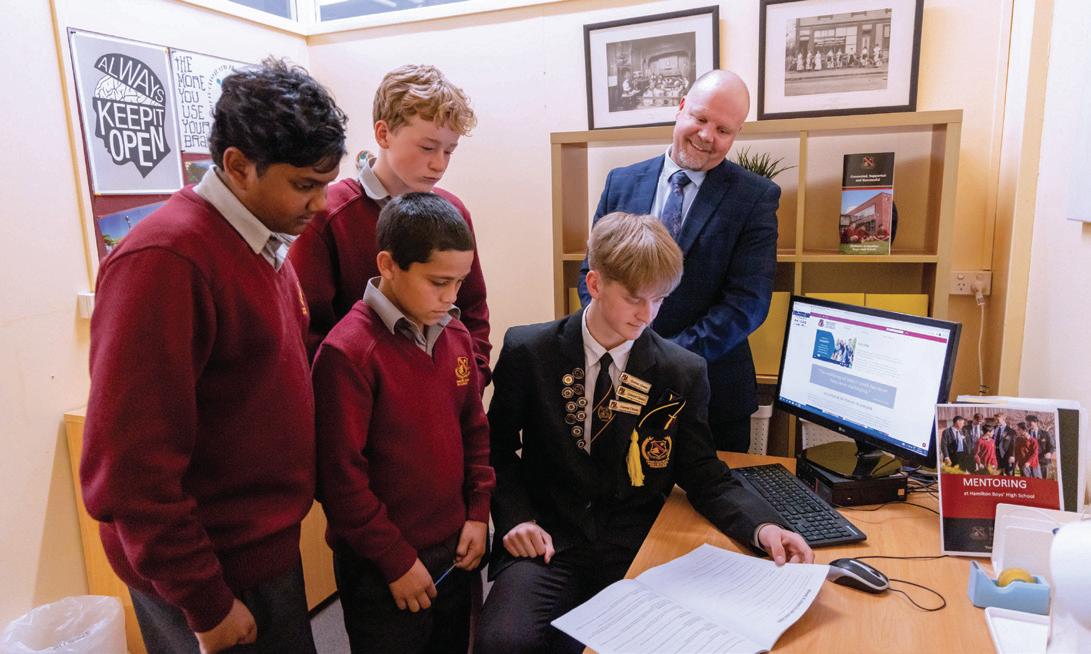
Supporting educators
A significant benefit of SchoolTV is the support it lends to educators, says Helen.
“Providing such a resource to parents can alleviate the teacher’s burden, making them feel more valuable. In turn, parents feel acknowledged and are directed towards concrete, intelligent and expert advice.
“The child feels supported, parents feel closer and more connected to their child. The teachers feel less pressured to know everything and have made a relationship with the parents. Everyone is more empowered. It’s a real gift of sorts.”
Manaakitanga is at the heart of SchoolTV – connecting schools with parents, children with parents, and parents with knowledge. This is reflective of SchoolTV’s commitment to cultural inclusivity, explains Helen.
“We knew we needed to do work on being a responsible treaty partner and we got a lot of advice from Māori consultants and spoke with Te Akatea New Zealand Māori Principals Association to understand their needs. That relationship is at the heart of who we are moving forward.”
The school gets real-time analytics of what topics
51 Tukutuku Kōrero 18 September 2023
Year 9 and 13 students at Hamilton Boys’ High School explore SchoolTV with director of wellbeing, Barney Killian.
“Schools are increasingly dealing with social and mental health issues; the need for a regulated and trusted resource that supports and connects parents, teachers and whānau has become a necessity.”
Helen McFarlane
families are clicking on, and the software is simple to use for parents and teachers alike, says Helen.
“That’s right, no logins! Parents said no logins so there are no logins. We set the software up on the school computer system, then the principal and whomever in the school needs access to the search results, are given access to the dashboard so the school can see which articles and videos are being watched the most.”
A school’s experience
Hamilton Boys’ High School’s Barney Killian is director of wellbeing to a diverse roll of around 2,200 students.
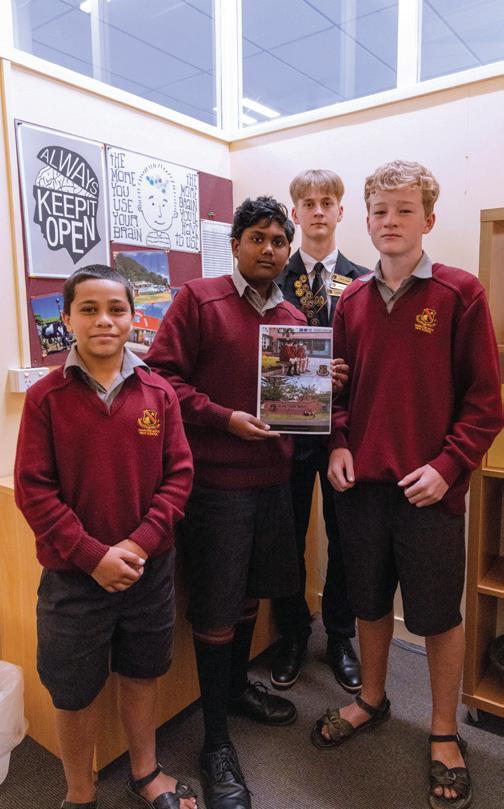
“I decided to use SchoolTV because there are a range of different topics available to parents to explore. Previously we had information evenings once a term for parents to attend and be informed on wellness issues.
“SchoolTV means we can deliver monthly issues to ALL the parents as well as provide parents with the library of online videos and information relevant to them that they can access at any time.
“Hamilton Boys’ High School SchoolTV is one of the schools that get the most hits on average. When I promote a topic to our whānau, we typically see around 400 hits on our online magazine, plus school links – it’s amazing. When you look at how many parents are accessing it, it’s very positive.”
He says that parents are drawn to, and have engaged with, topical issues of the day.
“We had a lot of interest in the topics sent out on social media influencers and their impact on students and the current topic of neurodiversity. I also spoke to staff about neurodiversity and how anxiety can present in students with ADHD for example. It’s a really positive platform to share information and allow staff and parents to support our students.
Barney says the ease of accessibility makes it so positive.
“We also send regular highlight topics to parents. Every week or two, we have a different wellbeing focus within the school. This week our theme was whanaungatanga. We posted the SchoolTV Relationships series link on our parent forum.”
Creating connections
Barney explains how the resources are well used by staff, with their deans, counsellors, and academic and Māori mentors using it to communicate a range of topics relevant to them at the time.
“For example, the deans may want to address truancy with parents. The platform allows the dean to access and utilise any content on SchoolTV whether that be a oneminute video, five-minute video or a link to the entire topic.

“There is so much information out there. We use SchoolTV to help find information that is easy to access, easy to understand and unpatronising.
Barney says their school is lucky to be able to afford such a programme. And he says as a parent to secondary schoolaged children himself, he understands the challenges parents and students face.
“Parenting is not easy! By sharing topics, we hope to create connection and discussion between parents and children.”
52 Education Gazette gazette.education.govt.nz
Top: SchoolTV can be hosted on the school’s website.
Bottom: Wellbeing is key at Hamilton Boys’. Three Year 9 and one Year 13 student showcase their Boys to Men Mentoring Programme.
Awards for Gifted Learners
E whakaako ana koe i ētahi ākonga iho pūmanawa?
Ākina rātou kia tono mai ki ngā Tohu mō ngā Ākonga Iho Pūmanawa hei tautoko i ā rātou whai i ngā mātauranga me ngā wawata.
E wātea ana te tono mai a ngā ākonga iho pūmanawa i te kura kōhungahunga tae atu ki ngā ākonga wehe kura. E whakaaetia ana hoki te tono mai a ngā mātua, a ngā kaiako mō te ākonga.
Hei te 1 o Hepetema 2023 e huakina ai ngā tono, ā, hei te 9 o Oketopa e kati ai.
Ka
mō
te
mō ngā ākonga takirōpū
Mō
gifted.enquiries@education.govt.nz Mō
https://gifted.tki.org.nz/ further-support/awards/ Ka matawai
i te
eke te tahua ki te
te ākonga takitahi, ko
$5000
$2,500
ngā pātai, īmēra mai ki:
ētahi mōhiohio, toro mai ki:
rānei
waehere QR:
Kei te kimi mātou he wairua ururoa kia arahi ai ō mātou tamariki, ngā hoa mahi, me te whānau whānui ki nga huahua ataahua o Te Ao Māori.
We are currently seeking a new Kaiako to lead our children and work alongside our colleagues and community in all the wonderful things Te Ao Māori and Te Hiaroa have to offer.
Mangere Bridge School Aroha Ako Angitū
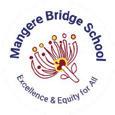
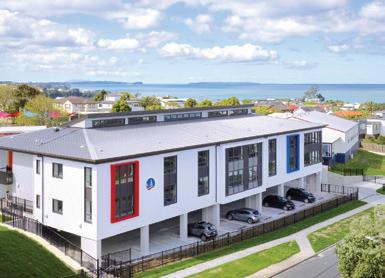
Kaiarahi mō Te Hiaroa
Te Hiaroa was established in 2019 as a need from the community who wanted their tamariki to learn Te Reo Māori me onā Tikanga. We follow our school values alongside having a connection with Te Aho Matua. Our three classrooms are.
1. Maunga Pikitia - Y0-Y2 Rūmaki Reo (level 1 total Immersion)
2. Te Ara Pūeru - Y3-Y4 Rūmaki Reo (level 1 total Immersion)
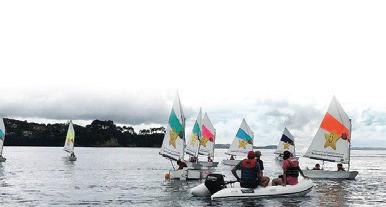
3. Te Pane o Mataoho Y5-Y6 (level 2 total Immersion)
The successful applicant will:
• Be fluent and able to teach Te Reo Māori me ōna tikanga in one of our classrooms.
• Have a sound understanding of Te Marautanga o Aotearoa.
• Provide pastoral support of students in collaboration with the Senior Leader Team and team members of Te Hiaroa.
• Establish close relationships and strategic partnerships with staff and whānau.
• Have positive and clear communication with many groups and individuals within school, Te Hiaroa Whāanau and Mana Whenua.
• Lead and support Mangere Bridge School Te Reo Māori lead personnel to help run powhiri, whānau hui and special assemblies promoting Te Reo Māori.

• Have excellent interpersonal and organisational skills.
• A willingness to contribute to the extracurricular life of the school.
• You will have access, manage and support professional development for the team
• You will have responsibility as a budget holder for Te Hiaroa and access to funds to support tamariki and learning in collaboration with the Principal.

If you are interested in this opportunity please complete the Application Form and email it with your CV and covering letter to Bernicem@mangerebridge.school.nz by Friday 13th October 4pm. Those who are shortlisted will be contacted for an interview. Mauri ora kia koe.
Principal|Tumuaki
Contributing Primary U6 Roll 650
Our new Principal will:
We are looking for a Principal who has proven experience as an effective educational leader, a passion for education and a commitment to creating an inclusive and inspiring environment. The successful applicant will continue to uphold our school’s pride and traditions and, at the same time, shape and lead the vision for the next decade.
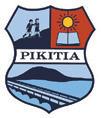
Position commences Term 2 2024
Applications close 1:00 pm Friday 20 October 2023
Application packs are available online www.educationgroup.co.nz or contact
Tanya Prentice or Rowan Johanson at The Education Group Ph: (09) 9202173 email: admin@educationgroup.co.nz
• Live our values and respect our traditions
• Value teamwork, have a collaborative leadership approach and build leadership in others
• Value Te Ao Māori and know how to give meaningful effect to Te Tiriti o Waitangi in all aspects of the life of the school
• Have up-to-date knowledge of the New Zealand Curriculum and effective teaching and learning practices
• Value academic outcomes, alongside a well-balanced programme, with a commitment to EOTC, the Arts, sports and wellbeing
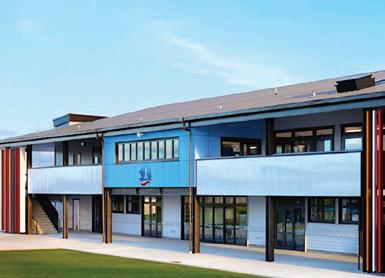
• Have strong interpersonal skills, be approachable, caring and have a sense of humour
• Be visible and engaged, and able to build connections with and between students, whānau and the wider community
• Have experience in the areas of school finance, personnel, property, and health and safety

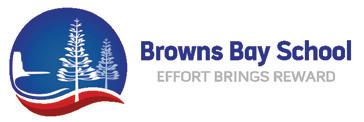
54 Education Gazette gazette.education.govt.nz RECRUITMENT
Glamorgan School Principal | Tumuaki U6 Roll 570-600
Glamorgan is a contributing primary school in Torbay, on Auckland’s North Shore. We have a very supportive Board, staff, community and Friends of the School, and have all the benefits of being a city school with the beach and a maritime park at our doorstep.


We want a leader who is compassionate, kind, caring and supportive. You will be empowering of others, energetic and inspiring. Your excellent communication and inter-personal skills will enable you to build strong relationships with all stakeholders - the Board, staff, students, whānau and the community.
We are seeking a Principal who:


Celebrating Learning and Achieving Together
• Is future-focused, and will unify and inspire us to build on our school’s strategic vision and direction
• Has a demonstrated commitment to giving effect to Te Tiriti o Waitangi in very tangible and practical ways




Has current, in-depth and research-informed pedagogical and curriculum knowledge
• Is committed to the ongoing development of a cohesive local curriculum that effectively represents our community
• Provides a framework that builds solid foundational skills in Reading, Writing and Maths, enabling every student to succeed
• Builds strong connections with all our learners and their whānau, and demonstrates an empathy for and an understanding of how to meet diverse learning needs
Applications close: 1.00pm Tuesday 10th October 2023
Interview date: Saturday 4th November 2023
Starting date: Term 1 2024
PRINCIPAL (U5)
Application packs are available online www.educationgroup.co.nz
For any queries contact Tanya Prentice or Jan Hill at The Education Group
Ph: (09) 9202173; email: admin@educationgroup.co.nz
An outstanding school that is the heart of the local community.
An Exciting Opportunity for a Visionary Leader and Educator
Located in the heart of the Waiau Pa community, our school is looking for a new principal who will build on the school’s traditions and bring new perspectives and energy.
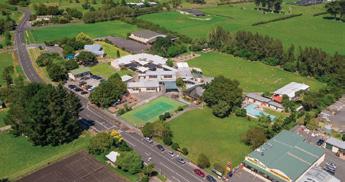
Our school is set in magnificent grounds with native trees, extensive playgrounds, and attractive classrooms. Our new principal will enjoy working with dedicated staff, enthusiastic children, and a supportive Board and parent community. Our roll is approximately 300, for Years 0-8.
At Waiau Pa School we hold high expectations for our students’ achievement, underpinned by our values of respect, inclusion, care and honesty.
Our principal will be:
» A visionary and innovative leader
» An exceptional communicator
» A highly visible team builder, who makes principled decisions
» A confident and passionate educator
» Have a high degree of emotional intelligence
For a full list of the selection criteria, please see our online listing. Information packs are available from www.educationgroup.co.nz Applications close Friday 20th October at 4.00pm.
PRINCIPAL
Ahakoa he iti, he pounamu. Although you are small, you are of great value, like greenstone.
Waimairi School, is a Year 0-6 Primary that sits in the leafy suburb of Strowan, Christchurch. We are seeking a Principal to lead our inclusive, collaborative and culturally responsive kura.

Our school is proud to be at the cutting edge of education, with a dedicated staff who are passionate about leading excellence in teaching and learning. The school is the vibrant hub of the local community, where all feel the Pūmanawatanga (heartbeat/vibe) of our school through our lived values.
Our tamariki are at the centre of all we do. The school has a rich culture of celebrating individuality and embracing each child’s uniqueness. We strive for every child to have the opportunity to live into their potential, building strong self-belief, confidence and kindness.
We Seek: An experienced and empathetic leader who is approachable and innovative. We seek an excellent communicator who connects with all in the community, through listening and drawing the best
out of others. They will have a good understanding of evidence-based approaches to learning and will lead a compelling vision of excellence, belonging and care.
To learn more about our school, what we seek in a Principal, and to apply for this position, please visit: www.waimairi.school.nz/ vacancies
Applications close on Sunday the 22nd of October at 5pm
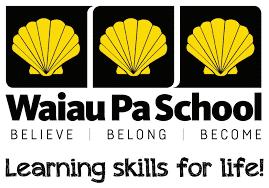
Rangitoto Colle ge
Deputy Principal 8MU/1SMA
Rangitoto College is seeking an outstanding leader for the position Deputy Principal (8MU/1SMA) to join us in 2024. We are looking for talented, energetic and skilled educators who are committed to achieving excellent outcomes for every student. Leadership responsibilities of the successful applicant will include:
Deputy Principal 8MU/1SMA

Student Engagement & Success
• Lead a strategic approach to enhance positive welbeing outcomes
• Support of cultural and diversity programmes within the Rangitoto College community
• Manage student transitions into, and through, the College
• Lead the pastoral care of a year group
• Lead the development of student well-being programmes
Closing date: 9am Thursday 5 October 2023
Applicants can view the job description and apply online at: www.rangitoto.school.nz/employment/rangitoto-college-vacancies
Tumuaki/Principal
In partnership with Ngāi Tūahuriri, Te Aratai College is seeking a Principal who will be a pillar within the community and one who will lead with head, heart, and hands.

This is an opportunity to lead the education of a diverse range of over 1050 learners from Years 7 to 13, drawn from over 50 nationalities. Te Aratai College is proud to deliver a holistic and tailored education by working in partnership with tertiary organisations and community agencies. The campus is also home to a technology centre that averages 1,400 students per week from the east of Christchurch. Also on our campus is the Kimihia Parents’ College which is integral to our school community and the Kimihia Early Learning Centre. Te Aratai is a College within a community, for the community.
Our exponential roll growth is a testament to a community of learning that shares a moral foundation and places the students, whānau, aiga and families at its centre.
We seek: A Principal who is visible, progressive, purposeful, experienced and builds authentic relationships on all levels. Reciprocally, we offer the incoming Principal genuine and diverse students, whānau who have a sense of pride and belonging to our kura, a dedicated team of focused staff, and a supportive Board of Trustees.
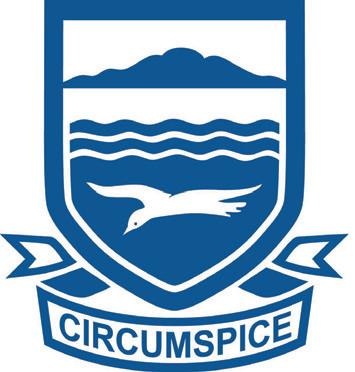
To learn more about our school, what we seek in a Principal, and to apply for this position, please visit: www.tearatai.school.nz
Applications close on Sunday the 15th of October at 5pm
56 Education Gazette gazette.education.govt.nz
RECRUITMENT
gazette.education.govt.nz
the QR codes with the camera on your device. VACANCIES NOTICES PLD
To view
the
PLD, general notice listings and vacancies at
Scan
TAUTAPATIA TĀU
TINO ĀKONGA
MŌ TE TOHU KAIRANGI MĀTAURANGA AHUMAHINGA A
TE PIRIMIA.
Kia whakanui tātou i ngā ringa waihanga, ringa auaha, ringa rehe o anamata.
He paraihe e $2,000 te nui i whakaritea mō te tino tauira e whakaatu ana i te kairangitanga o te mātauranga ahumahi ki ia kura.
Kotahi te tauira Tau 12, Tau 13 rānei o ia kura e māraurau ana kia whakawhiwhia ki te Tohu.
Ka tuwhera ngā tautapatanga o 2023 hei te 17 o Hūrae, ka kati hei te 23 o Hepetema.
KA RIRO I NGĀ
KAIWHIWHI HE PARAIHE E $2,000 TE NUI
Mō ngā puka tautapa me ērā atu mōhiohio, toro atu ki: pmvea.education.govt.nz
Mō ngā pātai, tuku īmēra ki: vocational.excellence@education.govt.nz
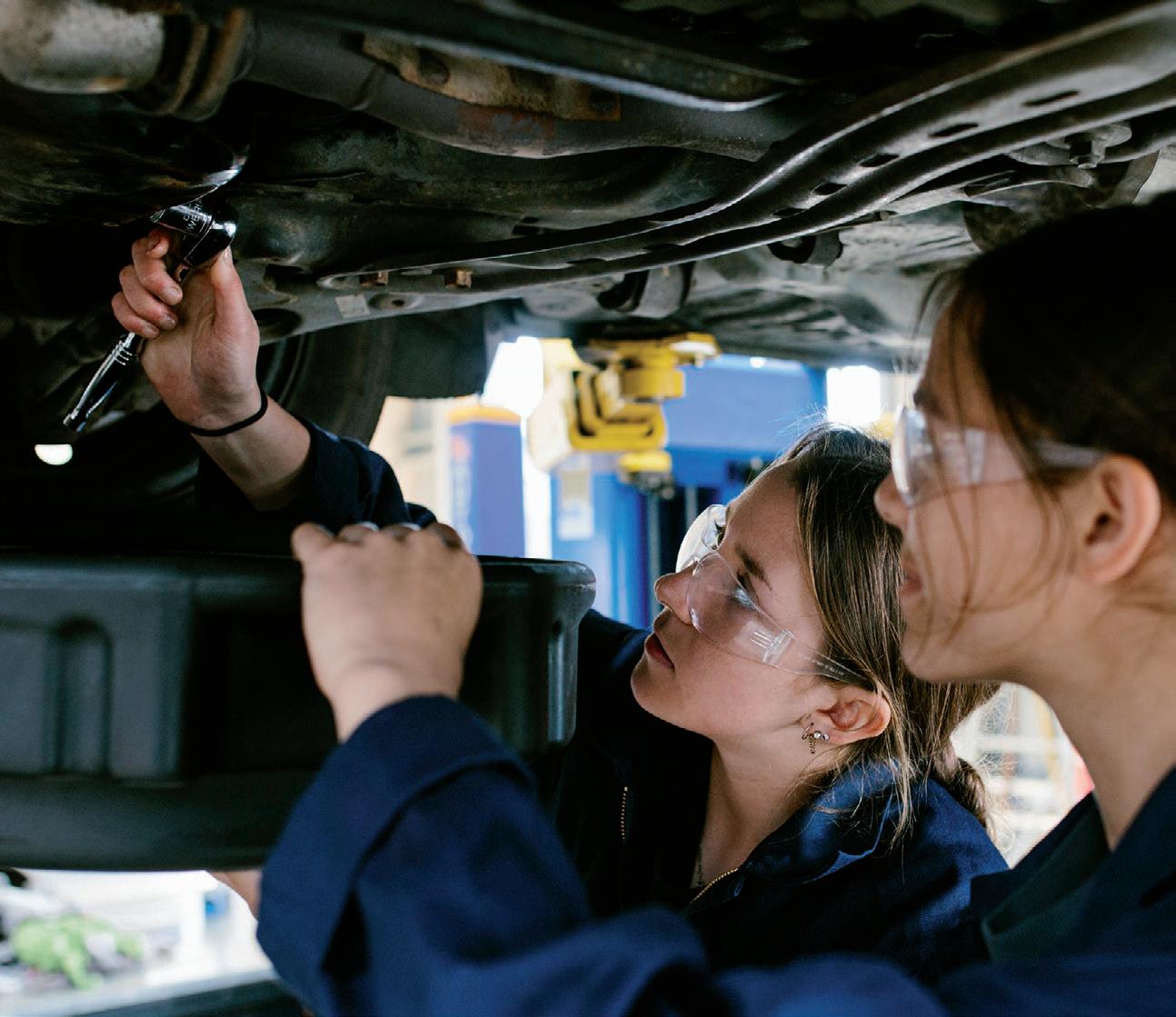
NOMINATE YOUR TOP STUDENT FOR THE PRIME MINISTER’S VOCATIONAL EXCELLENCE
AWARD.
Let’s celebrate our future creators, innovators, crafters and tradespeople. There’s a $2,000 cash prize for the top student who demonstrates vocational excellence at each school or wharekura.
One Year 12 or Year 13 student per school or wharekura is eligible to receive the Award.
Nominations for 2023 open on 17 July and close on 23 September.
RECIPIENTS RECEIVE A CASH PRIZE OF $2,000
For nomination forms and other information, go to: pmvea.education.govt.nz
For queries, email: vocational.excellence@education.govt.nz



















 Teacher Karin Chambers joining in the play and games where ākonga are 'the boss'.
TRAUMA-INFORMED APPROACH
Teacher Karin Chambers joining in the play and games where ākonga are 'the boss'.
TRAUMA-INFORMED APPROACH




































 Whai (string games) in the wharenui.
Kaleb (Ngāti Porou) (centre), says it had been cool to hang out with his friends and learn about Matariki on marae.
Whai (string games) in the wharenui.
Kaleb (Ngāti Porou) (centre), says it had been cool to hang out with his friends and learn about Matariki on marae.














 Health School teacher Sherril Palmer has supported Sophia since she became unwell in 2020.
Health School teacher Sherril Palmer has supported Sophia since she became unwell in 2020.
































